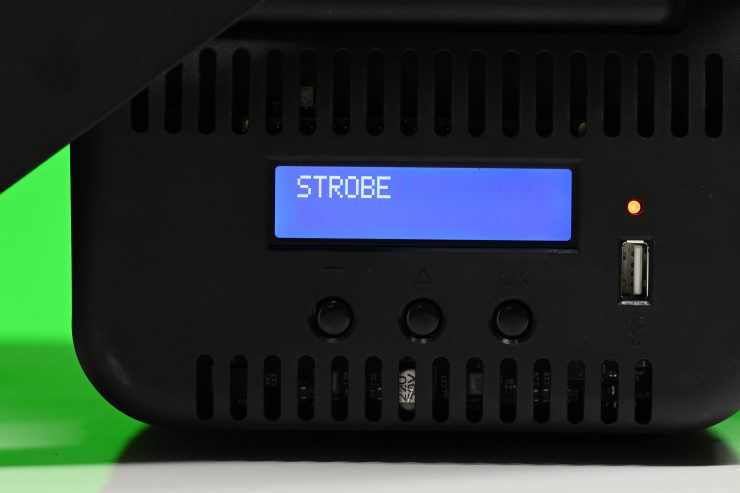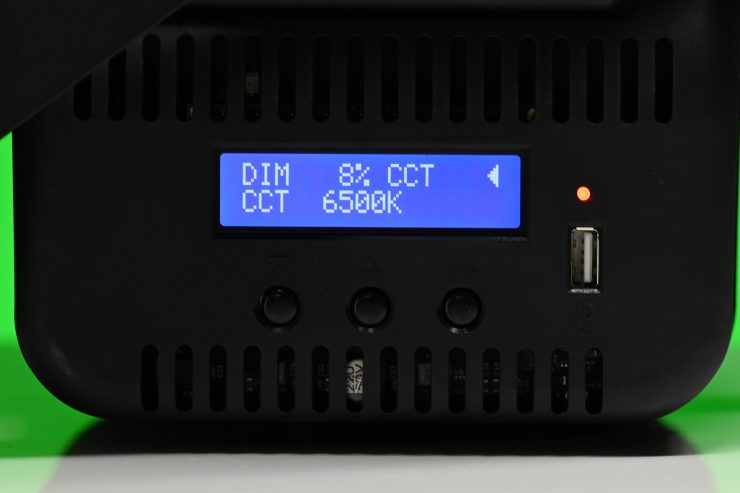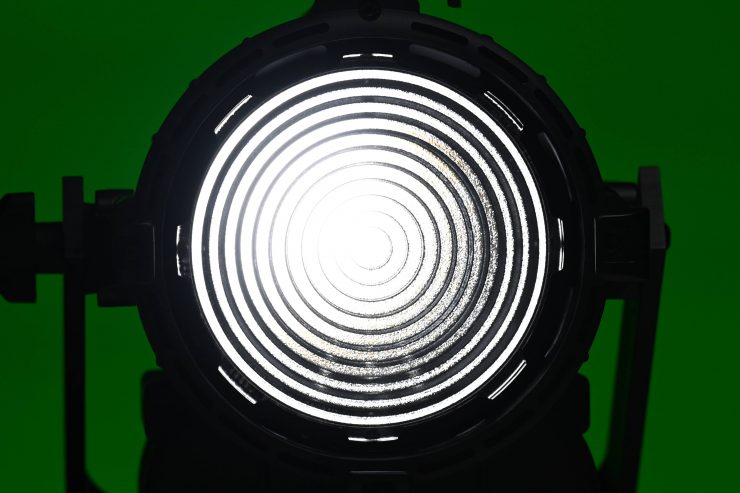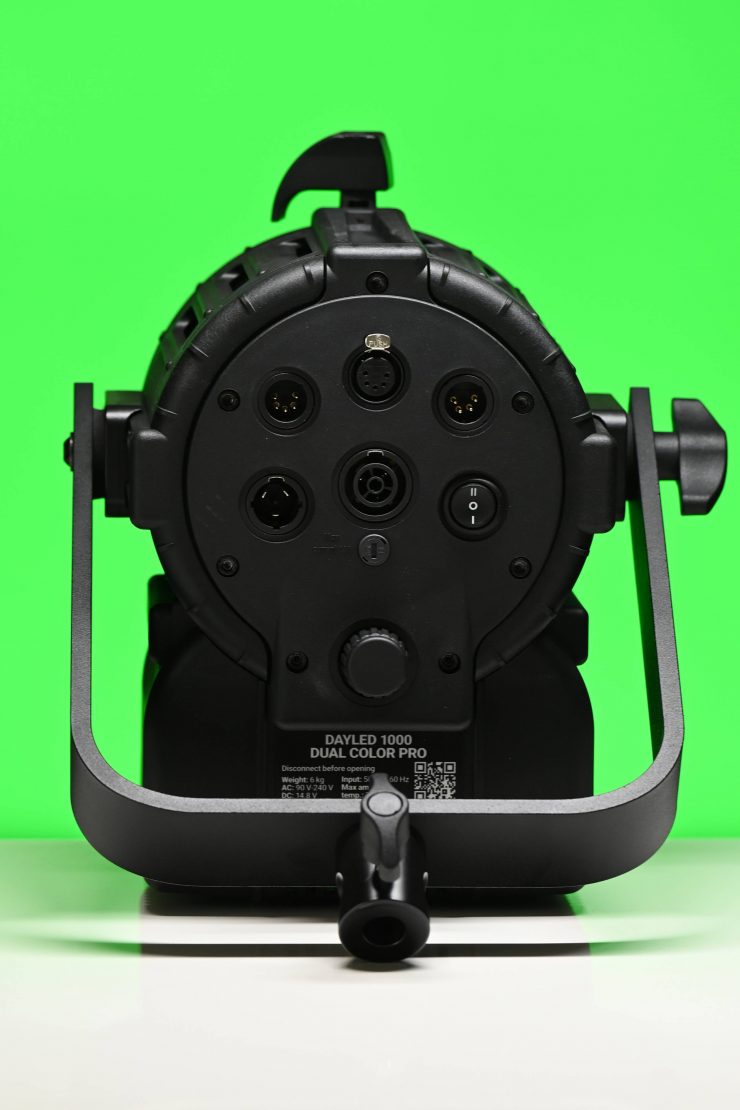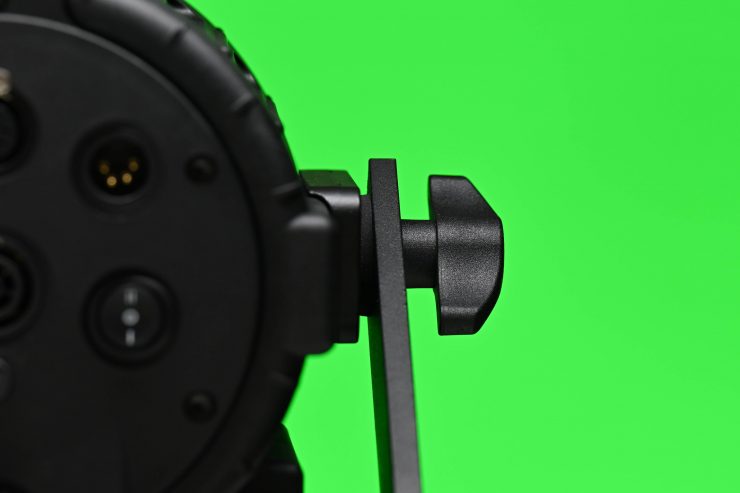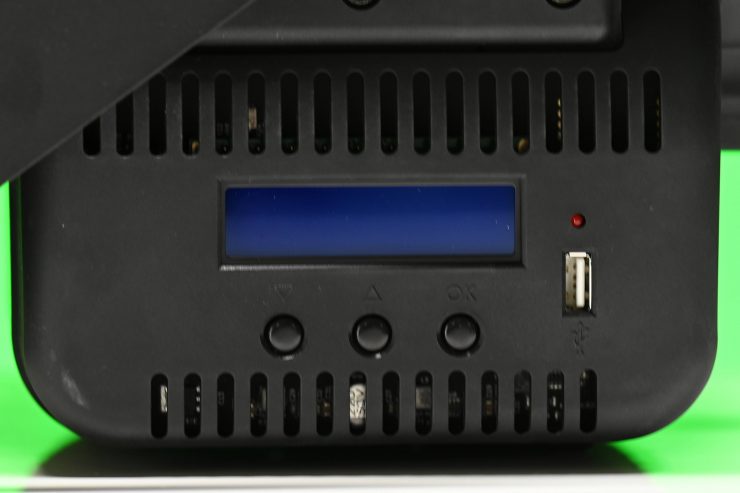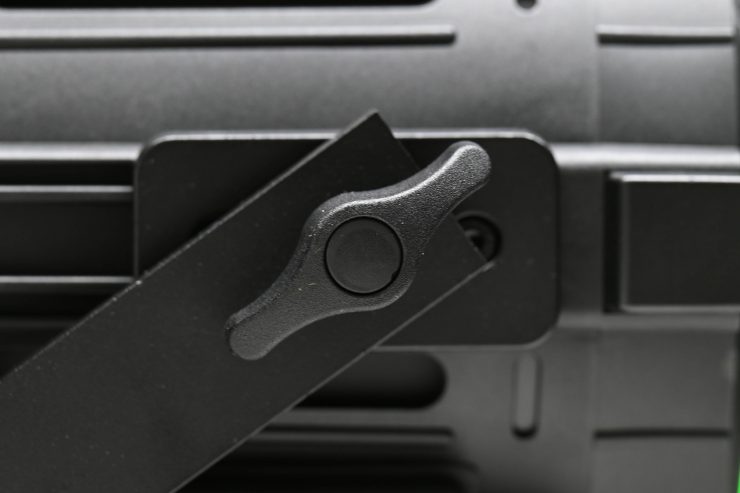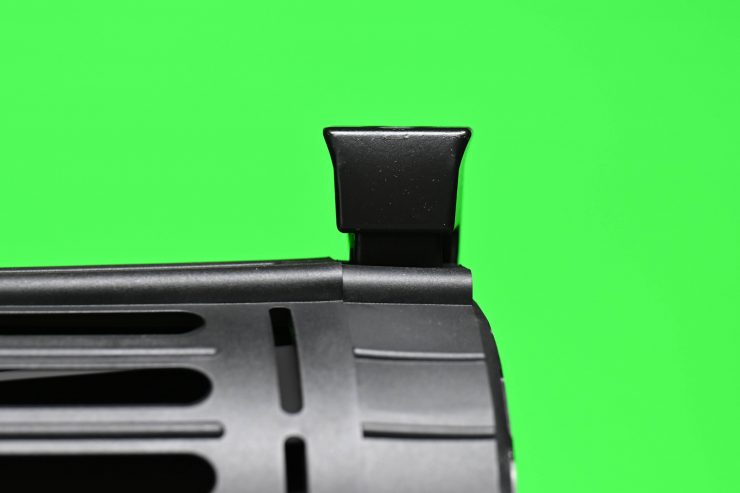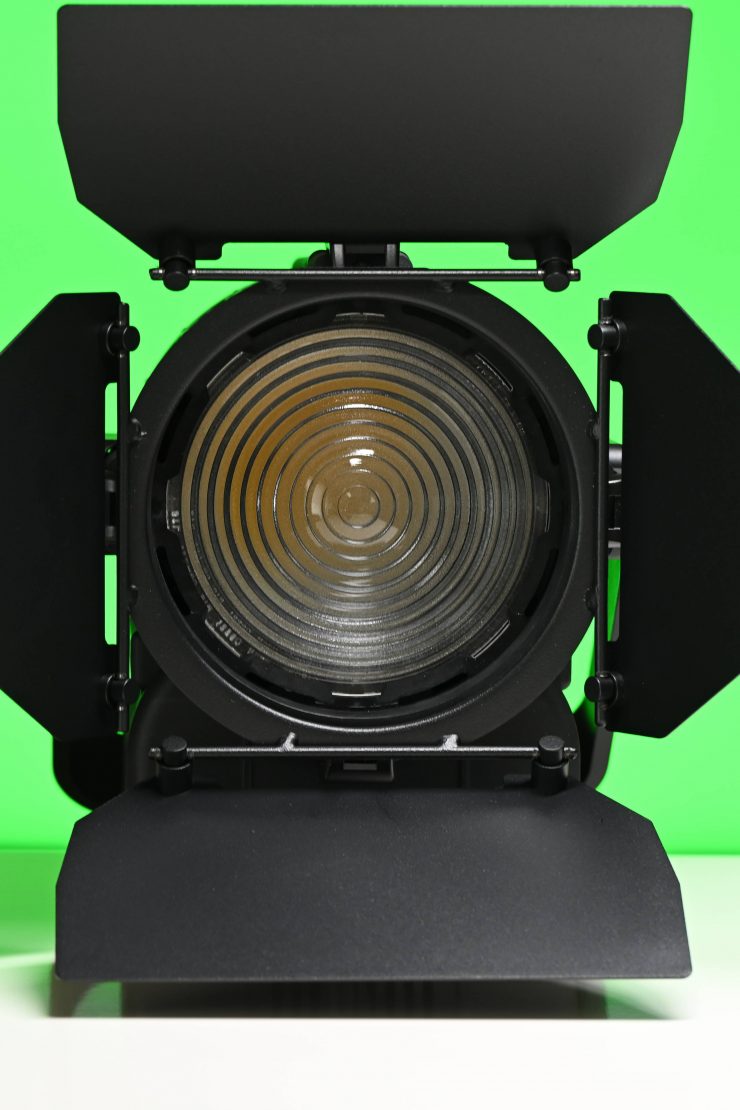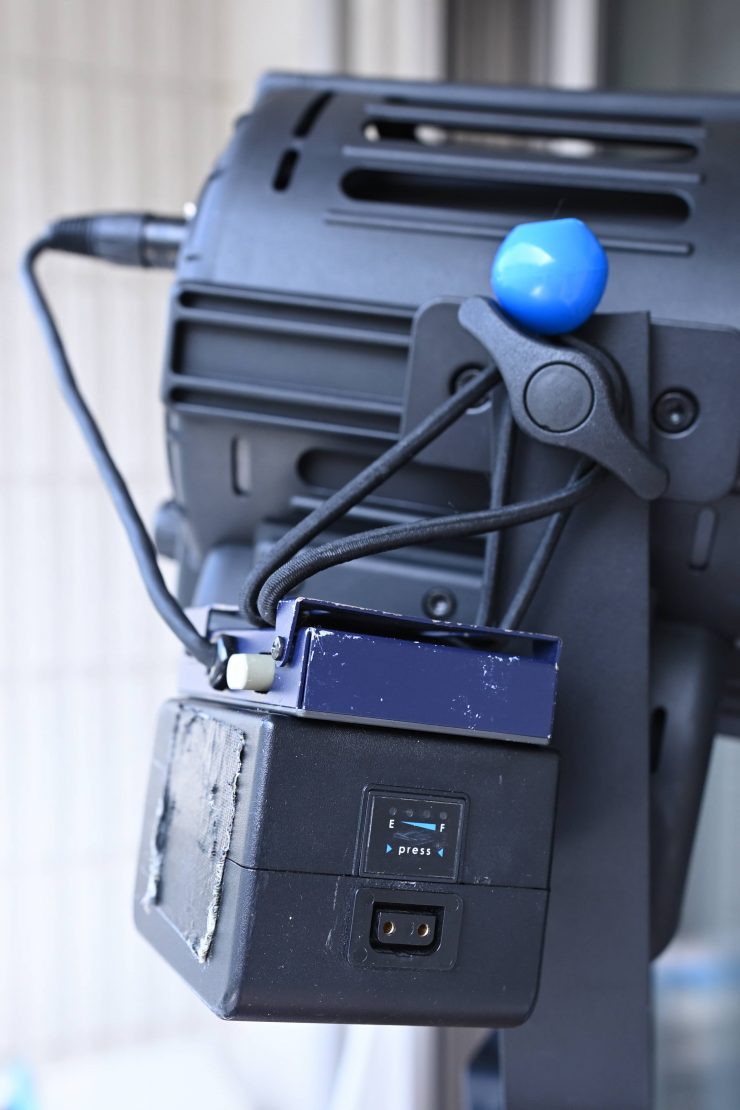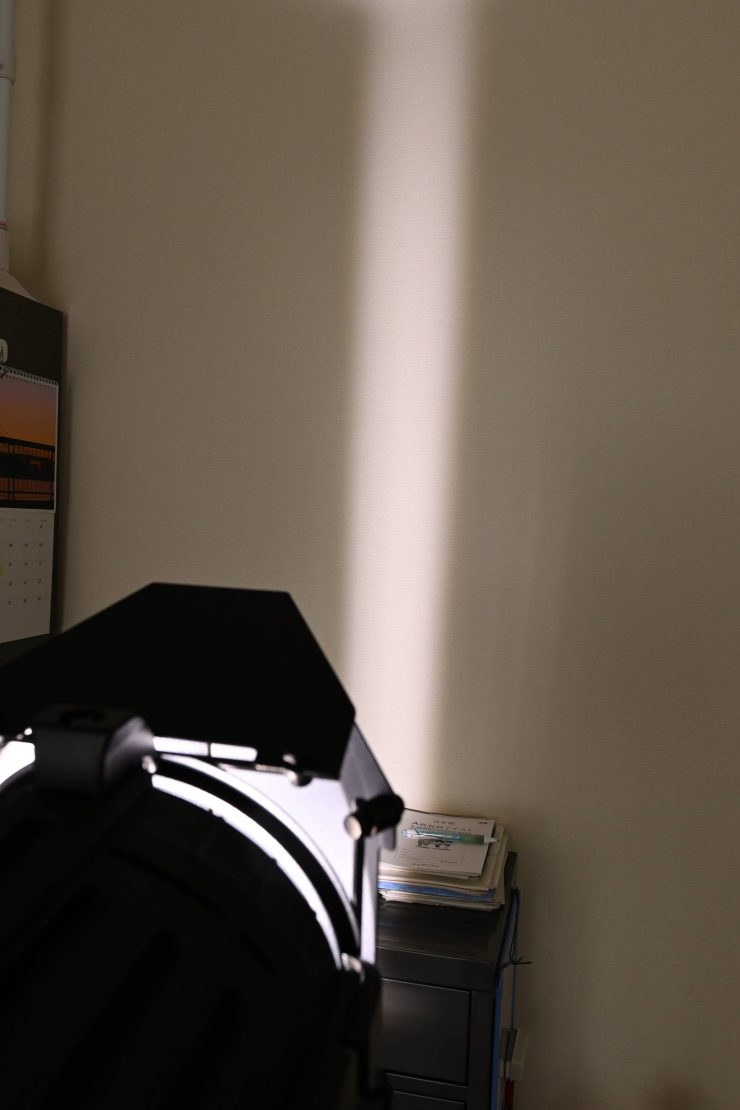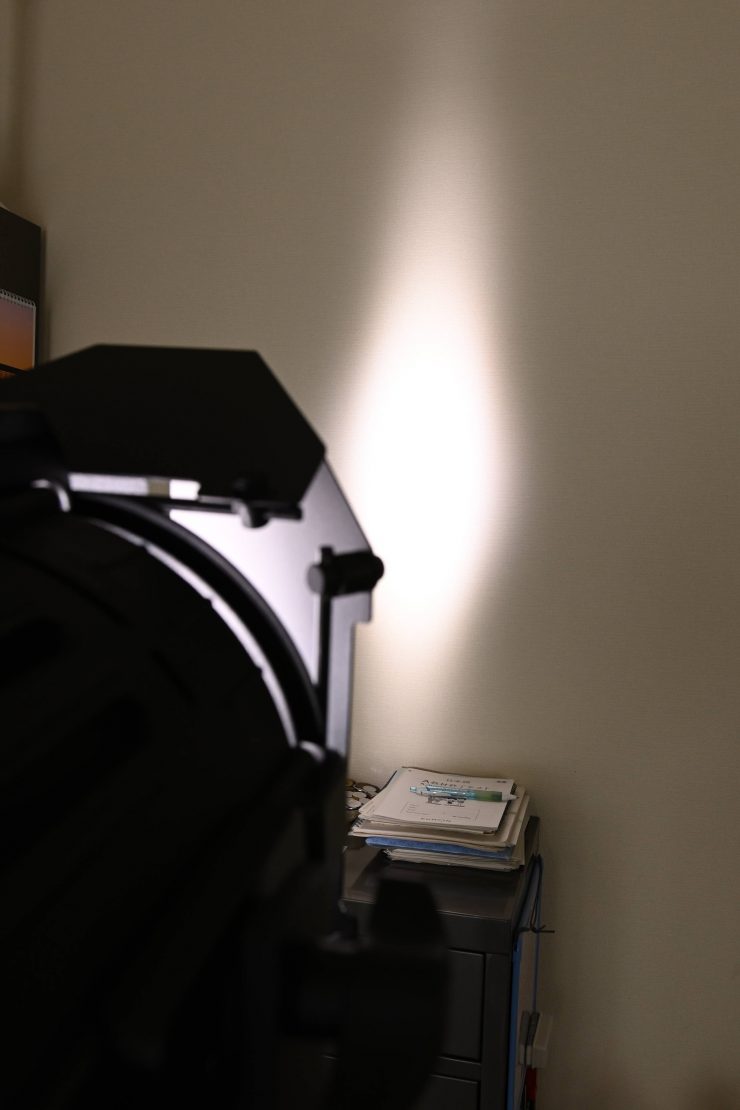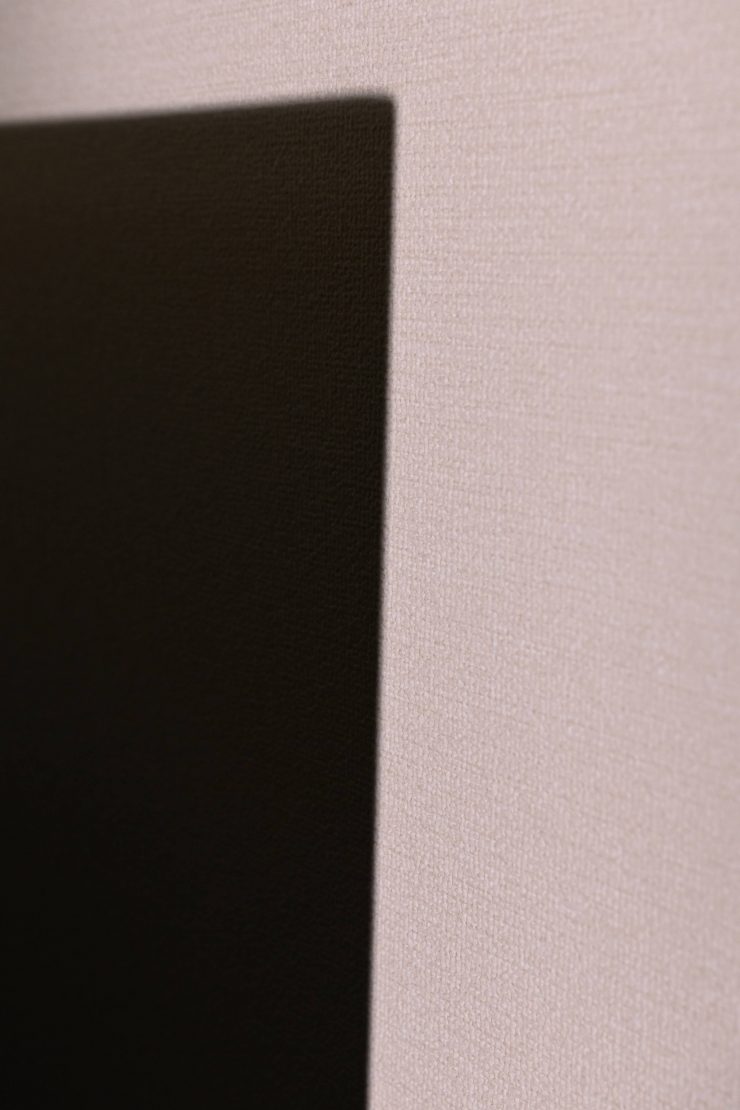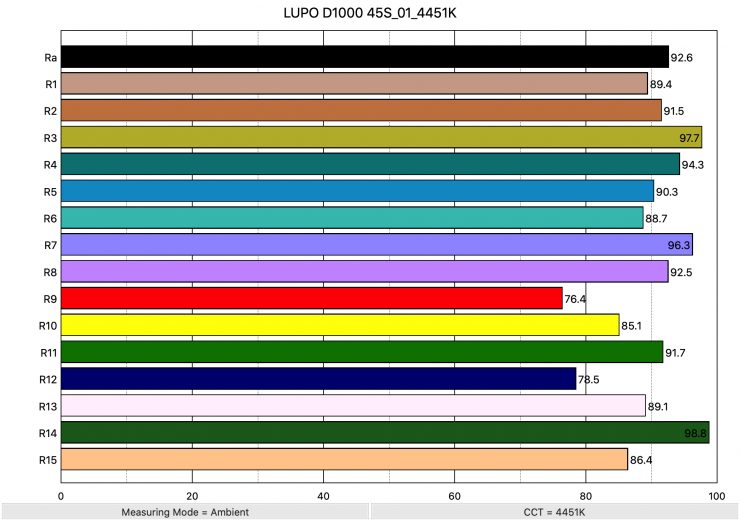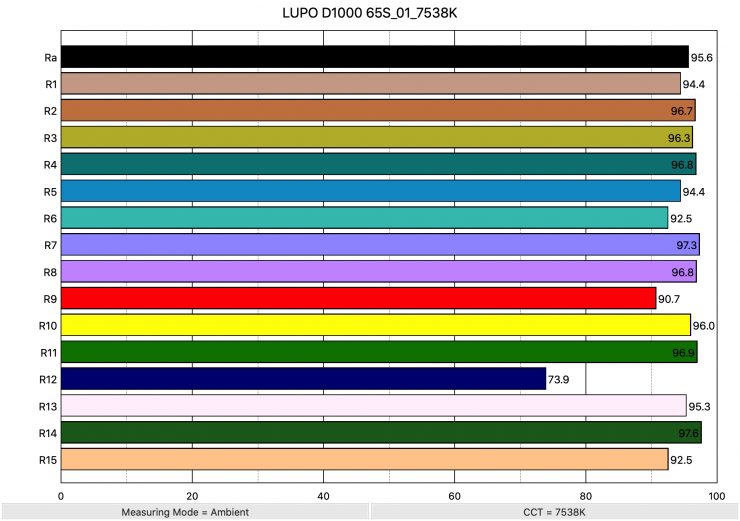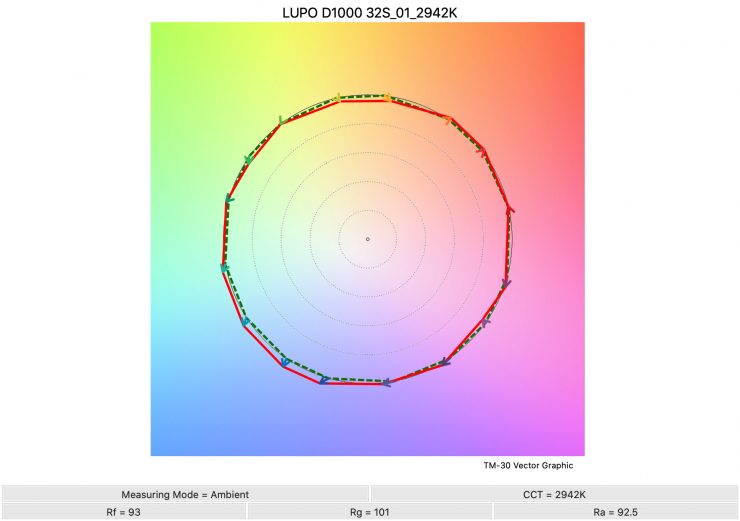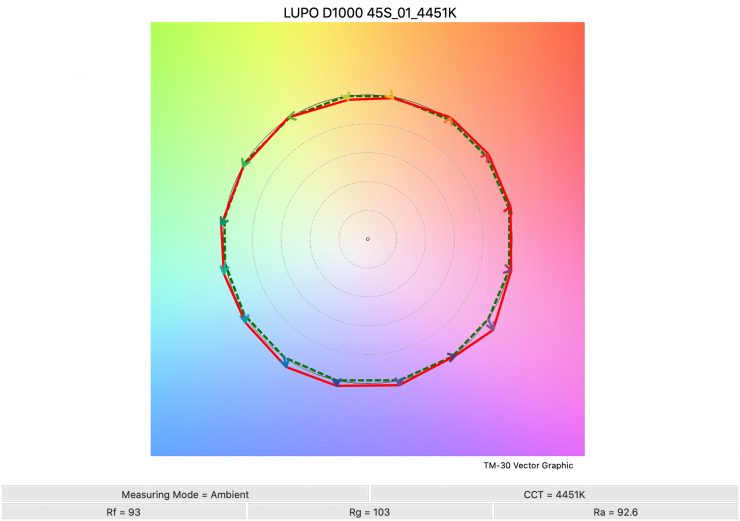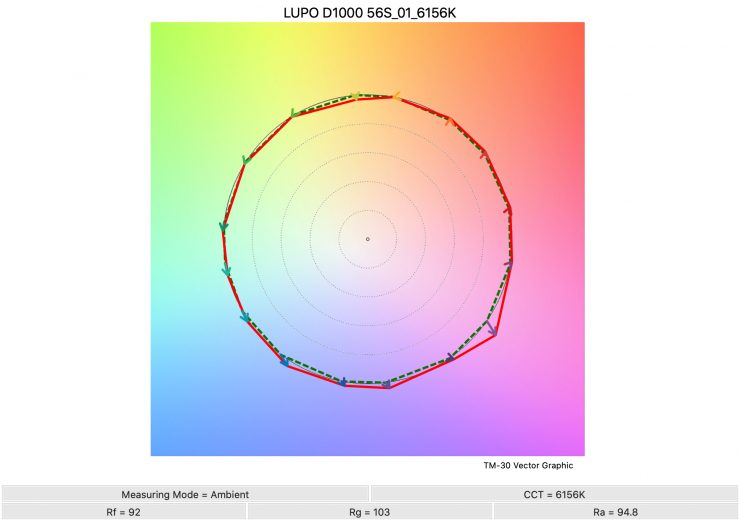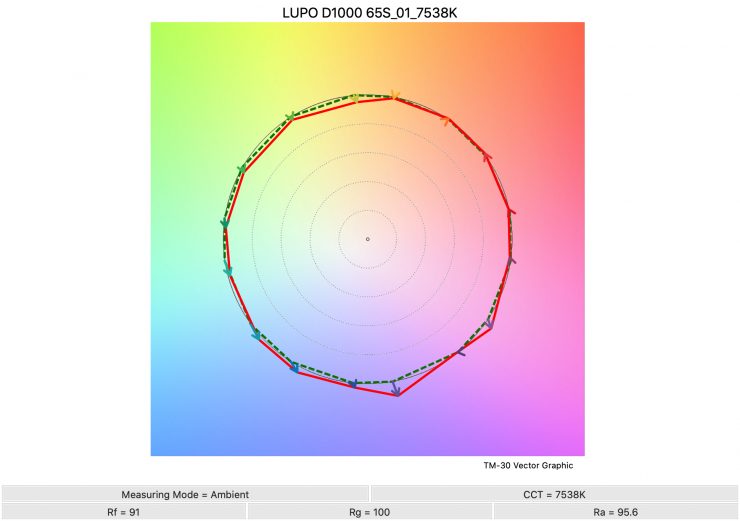
The Lupo Dayled 1000 Dual Color PRO is the Italian lighting manufacturer’s latest fixture. This is a new version of their very popular Lupo Dayled 1000 Dual-Color LED Fresnel that was released many years ago.
Lupo will also be releasing Dayled 650 and a Dayled 2000 versions of this light:
- Dayled 650 is equipped with 60W single LED array
- Dayled 1000 is equipped with 110W single LED array
- Dayled 2000 is equipped with 220W single LED array
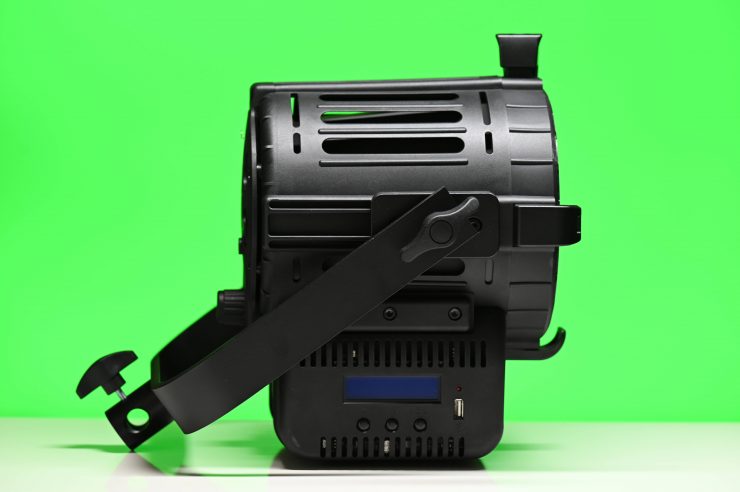
Key features
- 6.0″ Lens, Beam: 10 to 60°
- Variable Color: 3200 to 5600K
- CRI: 97, 4-Way Barndoors
- Onboard DMX
- Multi-Voltage AC Adapter
- AC or Optional Battery Operation
- Measures 8.0 x 10 x 9.0″
- 1000W Tungsten Equivalent
- 0 to 100% Dimming
Size & weight
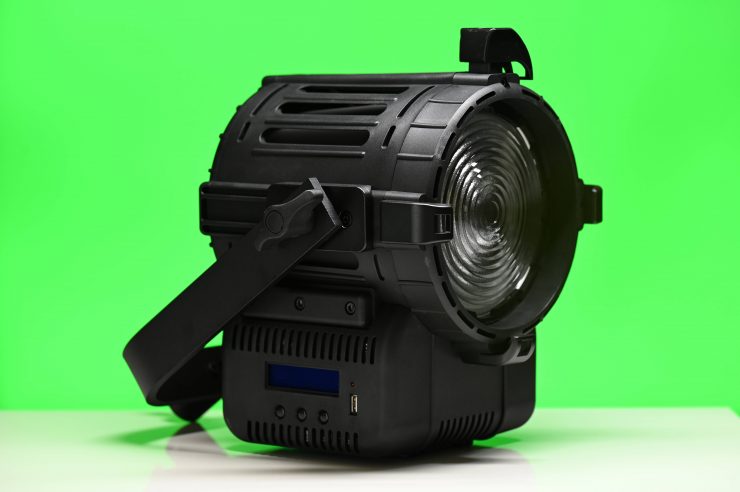
The Dayled 1000 Dual Color PRO tips the scales at 5kg (11 lb). It has physical dimensions of 270 x 280 x 300 mm. It is reasonably compact as far as the overall size goes and you could easily put it in a lot of bags. However, you do need to be aware that the height and depth of the fixture will mean it isn’t going to fit in most Pelican style cases.
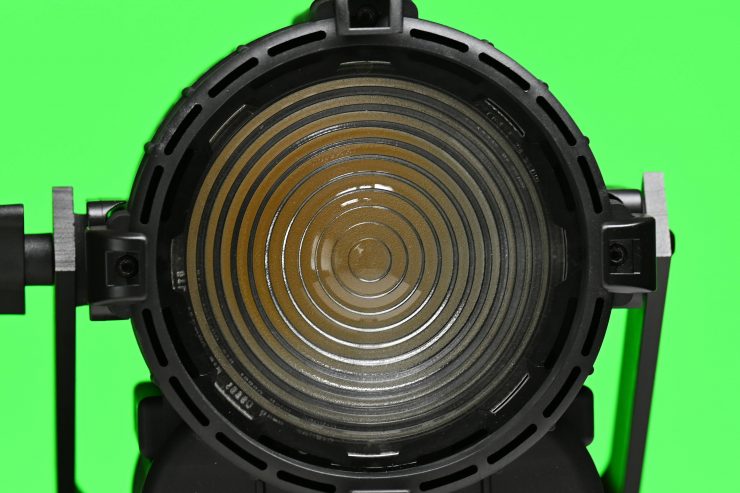
When building a Fresnel for a COB LED fixture you need to try and match the size of that COB element to the size of the Fresnel. If the Fresnel is too small in relation to the COB, the light getting to the Fresnel won’t be optimized.
Layout & Controls
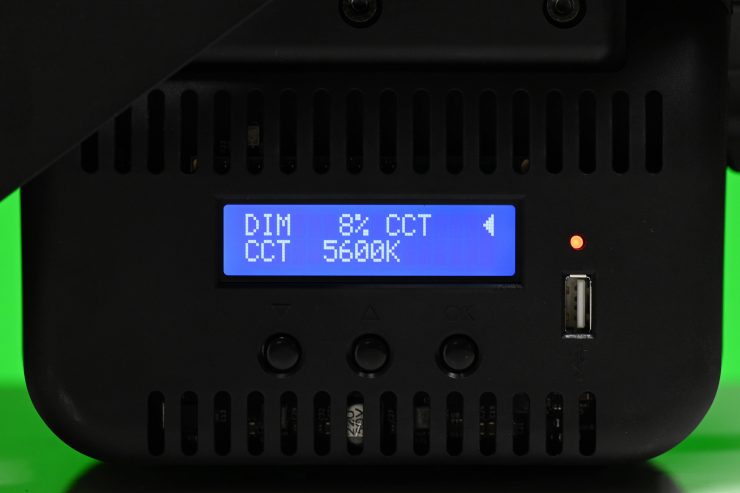
The light features very basic controls and it is fairly easy to use and operate. On the side of the light, you will find a small LCD display and three buttons. These buttons allow you to increase/decrease the intensity and Kelvin color temperature as well as access a basic menu.
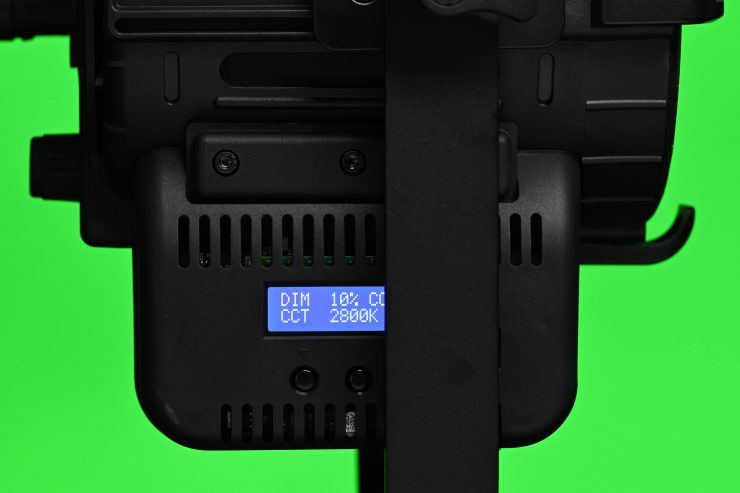
My only complaint is that the controls are hard to reach when you have the fixture on a light stand in a horizontal position because they are obscured by the yoke frame. I would have preferred to have seen these controls on the back of the fixture.
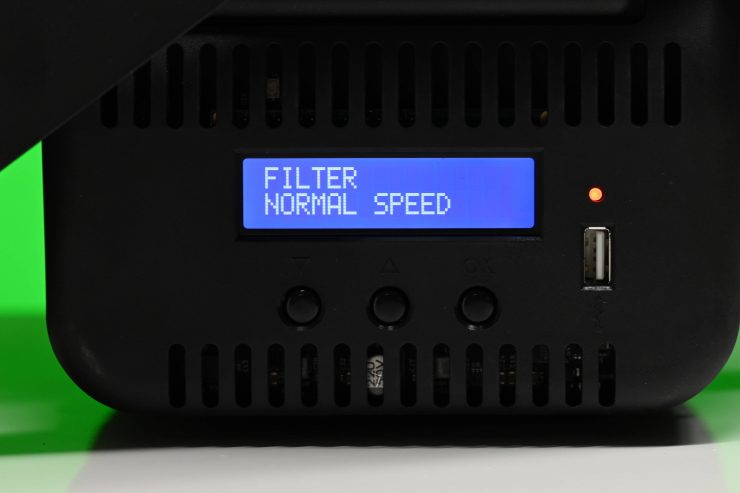
Now, there is also a very basic effects menu you can access where you can choose from:
- TELEVISION
- STROBE
- PAPARAZZI
- LIGHTNING
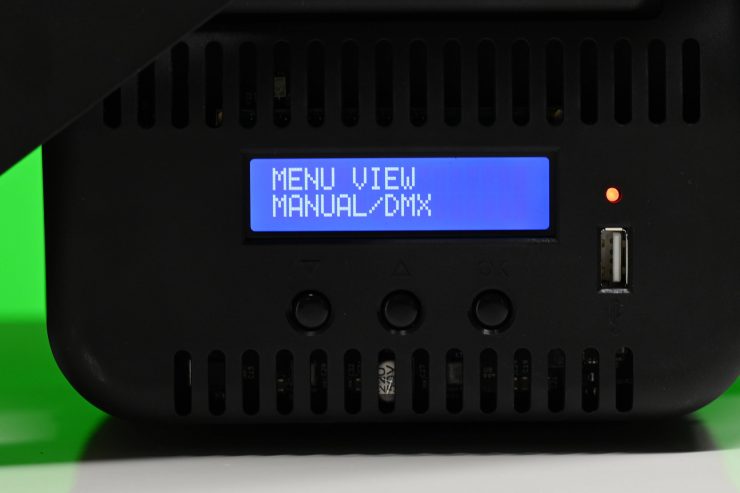
The light also has full DMX capabilities as it includes both a DMX Input and a DMX Through.
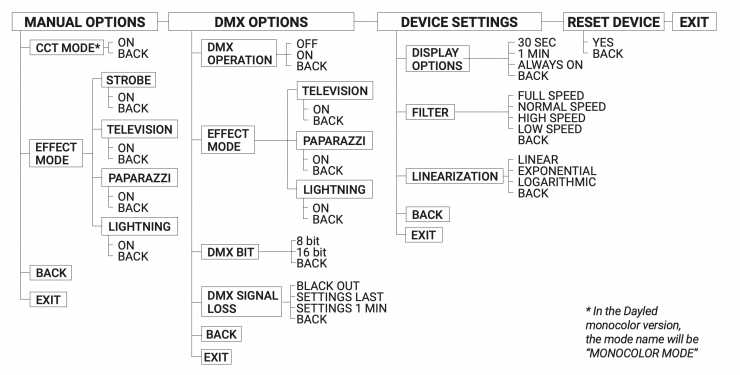
Above you can see a full list of what you can do with the light.
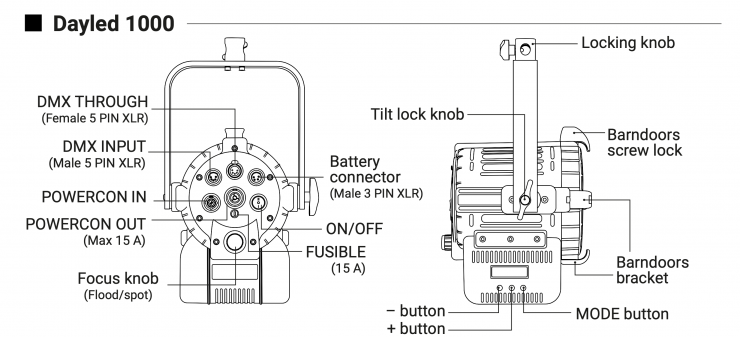
Above you can see where everything is located on the light.
Increased CCT Range
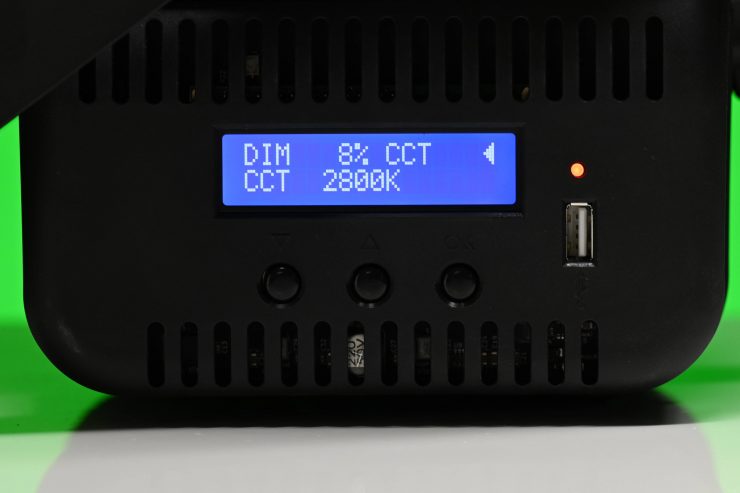
The original Dayled 1000 Dual Color was Kelvin color adjustable from 3200K to 5600K. With the new Pro version that has been increased to 2800K to 6500K.
Fresnel lens
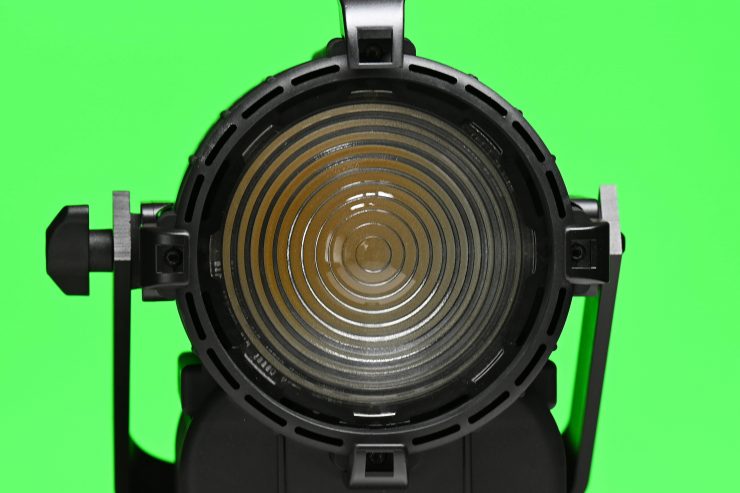
The Dayled 1000 Dual Color PRO uses a 6″ / 15.24 cm glass Fresnel. It is nice to see a proper glass Fresnel being used because quite a lot of affordable LED Fresnel fixtures use acrylic instead.
10° to 60° Variable Beam Angle
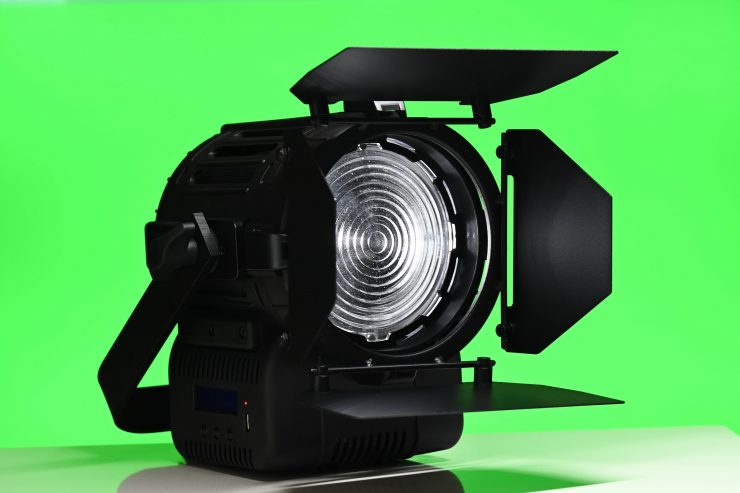
The Dayled 1000 Dual Color PRO allows you to adjust the beam angle from 10° to 60°. This is a good amount of adjustment and has increased from the original Dayled 1000 Dual Color’s 15° to 50°.
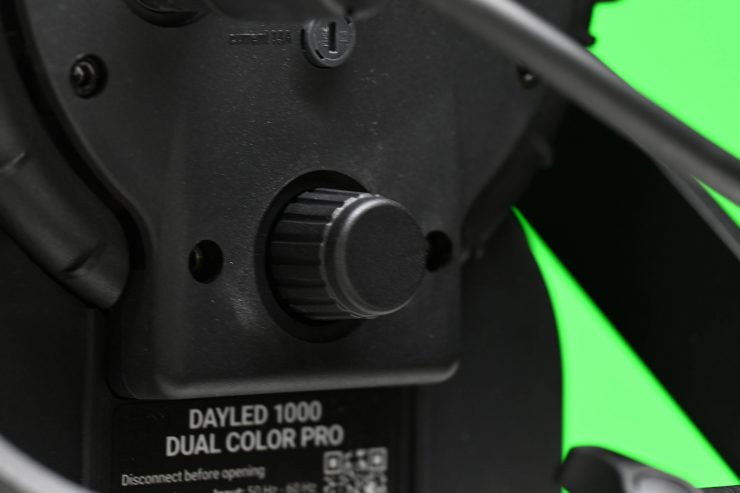
To adjust the beam angle you simply just rotate the rear adjustment knob on the back of the fixture.
Build Quality
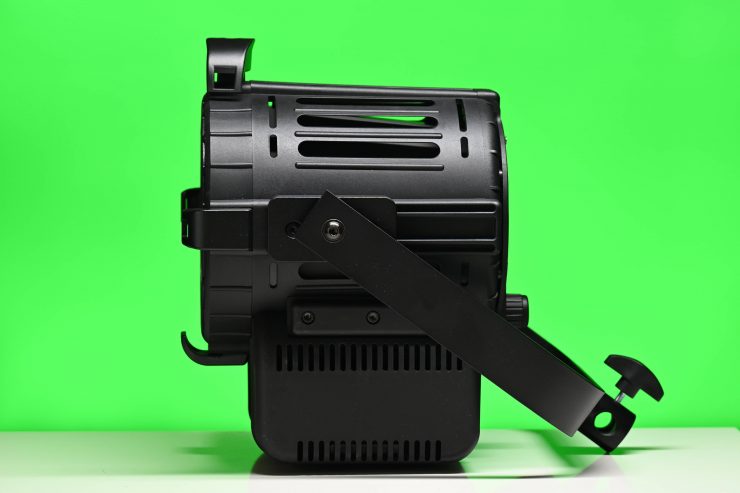
The Dayled 1000 Dual Color PRO is well made and it feels nice and sturdy. It is up to the normal standards that Lupo has throughout its range. There was nothing in regards to build quality that concerned me.
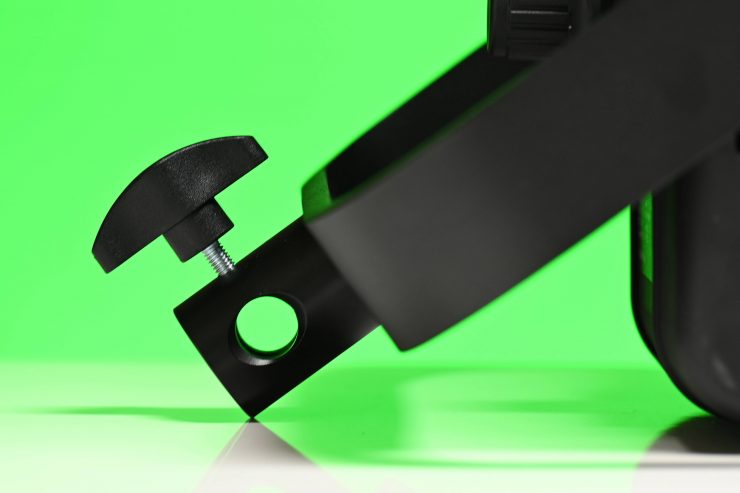
Everything is robust and solid. This is a fixture that has certainly been made for the rigors of field use.
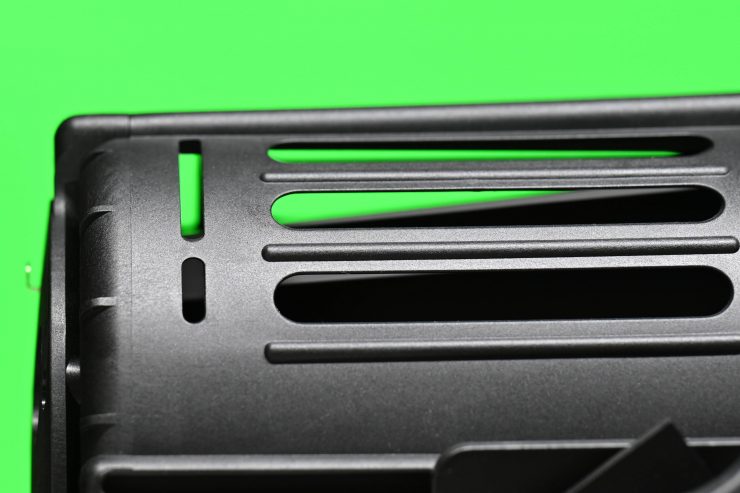
The exterior housing is a carbon fiber-reinforced technopolymer shell which makes it very bost. It also helps keep the fixture relatively cool.
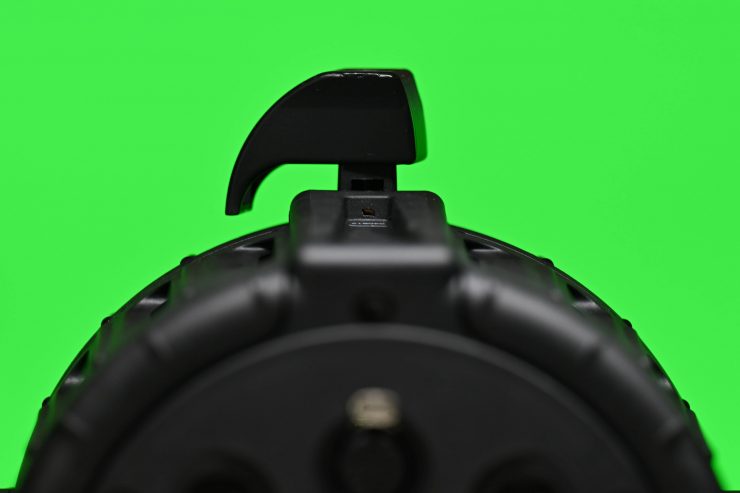
The barn door holder is very solidly made and the included barndoors fit onto the fixture securely.
Power Draw
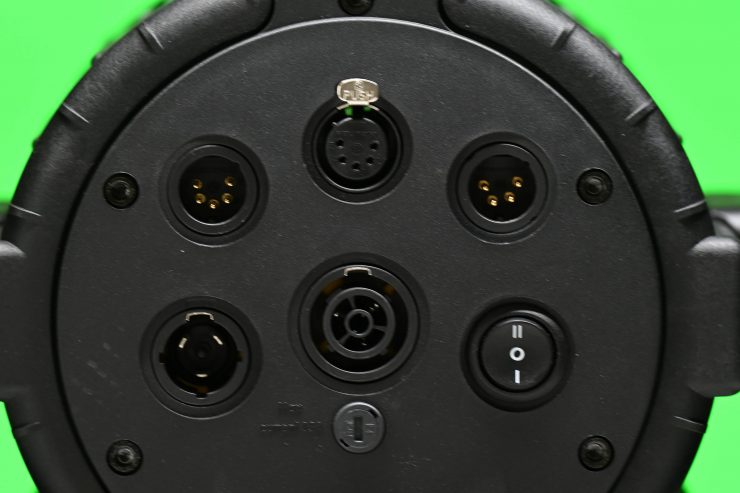
The Dayled 1000 Dual Color Pro draws just 110W so it can be run from mains power or off a flight safe camera battery.
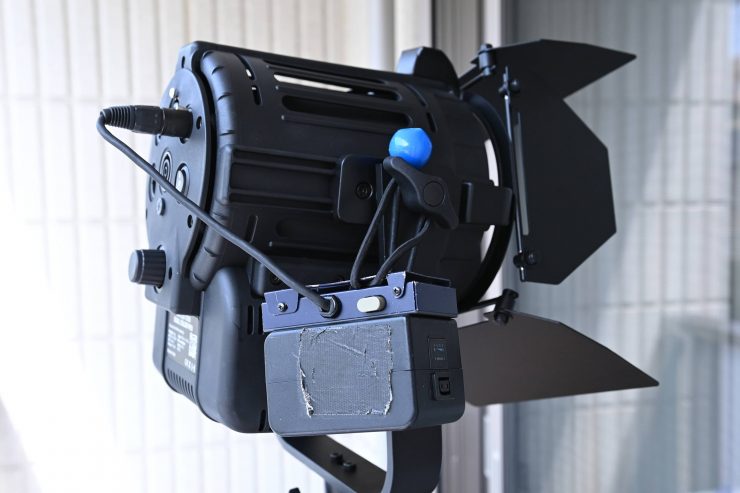
Being able to run the light at full power off a flight-safe camera battery is a big selling point of this fixture. The only downside is that you have to buy a battery plate separately to do this. I would have preferred to have seen Lupo include one as standard. I just used a V-lock battery plate with a 4-pin XLR cable that I happened to have.
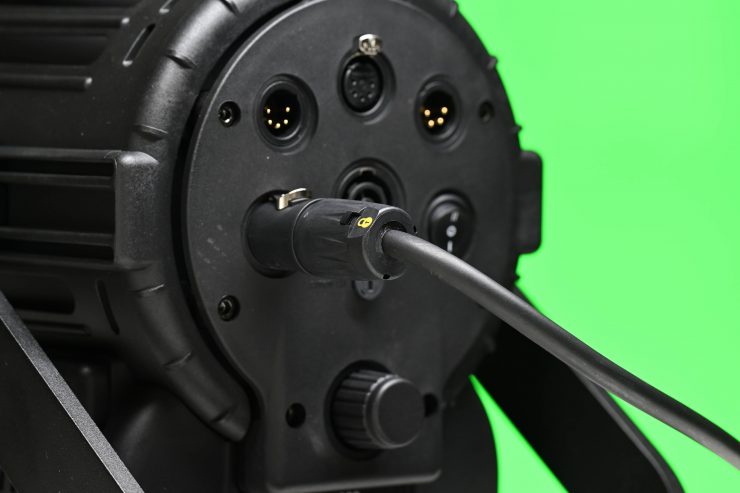
It is also nice to see that the light now uses a Powercon cable and there is both a Powercon In and an Out. On the old model, the AC cable was physically wired into the fixture.
Fan Noise
The light does have an in-built fan. I found that in the full flood position it was relatively quiet, but once you moved it to the full spot position the fan becomes louder for some reason.
The fan noise did somewhat concern me when you use it in the full spot position.
Range of motion
The light has full 360° rotation when you use it on a light stand.
If you do put the included barndoors on, then the range when angling the light down will be reduced.
Does it cut well?
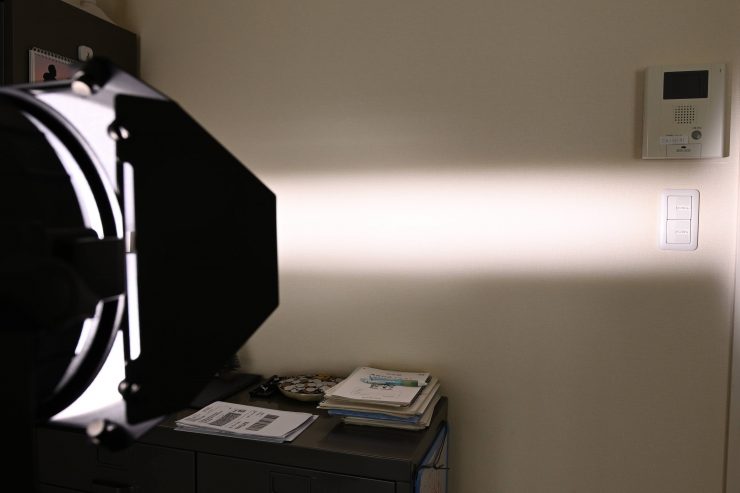
With the included barndoors you can cut the light fairly well, but you are not going to get super sharp lines. Above you can see some quick examples with the light set at 60°.
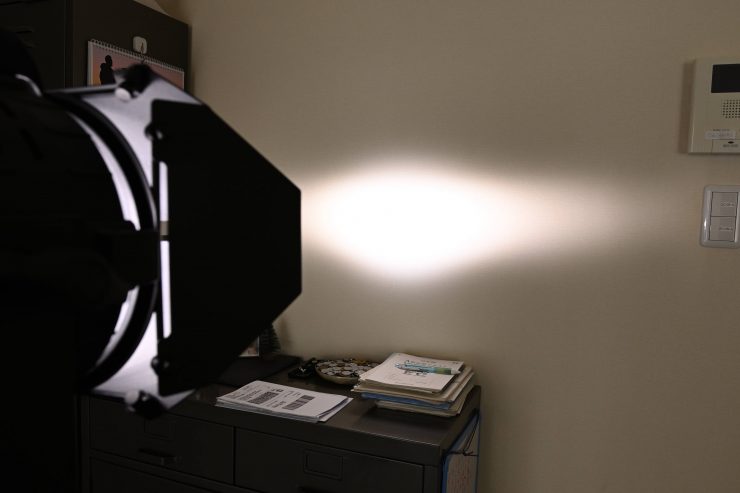
If you try cutting the light at 15° with the barndoors you will find that you can’t get a square or straight cut anymore and instead the cut will take on more of an oval appearance.
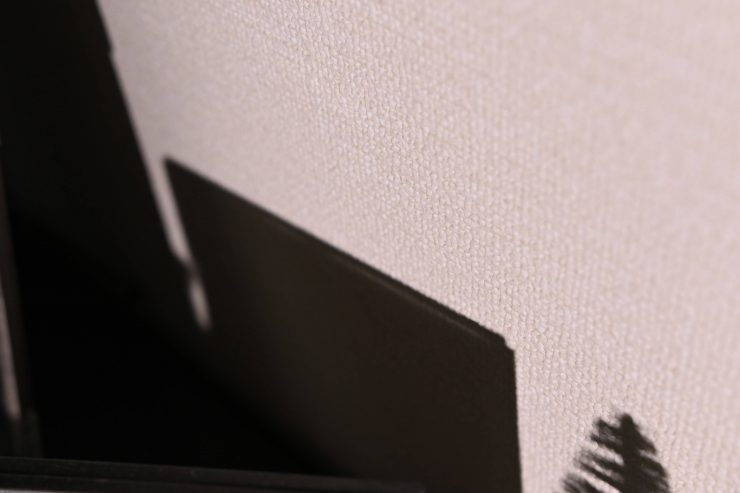
With the barndoors, you certainly can get very clean-edged shadows.
Is there any color fringing?
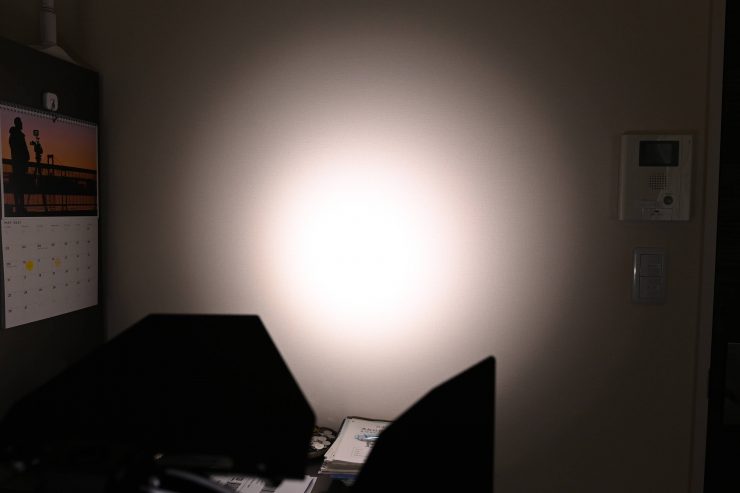

1m 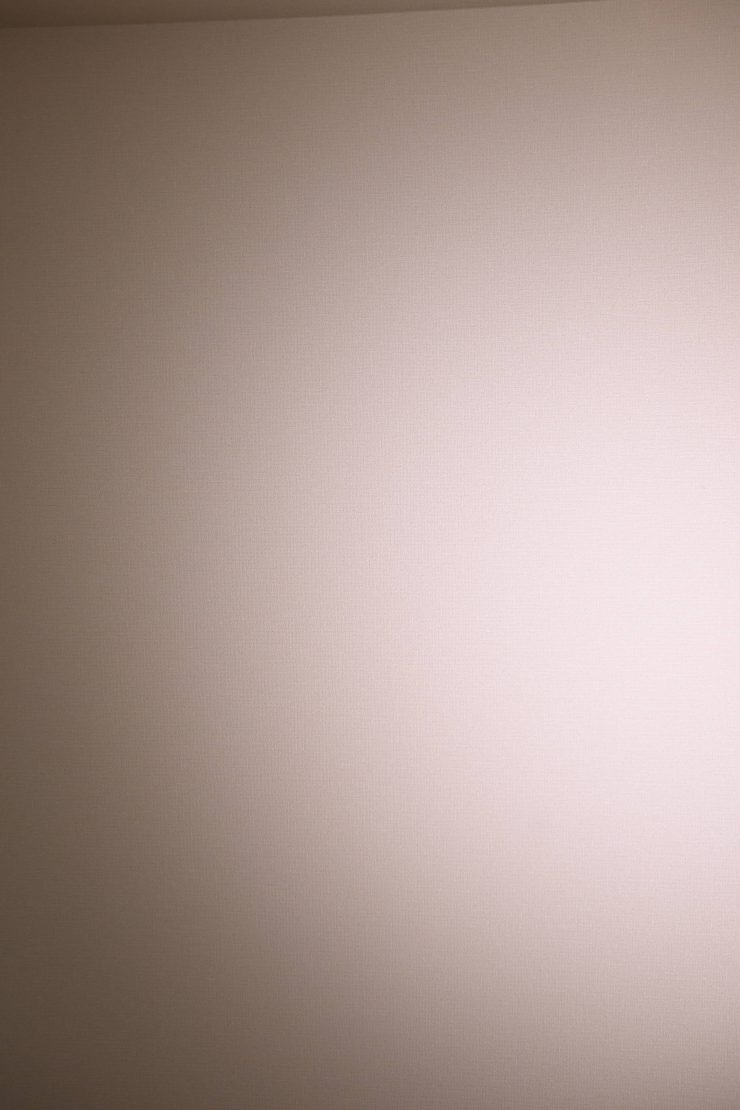
3m
There is a small amount of color fringing, especially if you are using the fixture at 15°, but it isn’t too bad.
Output & Color Temperature Accuracy
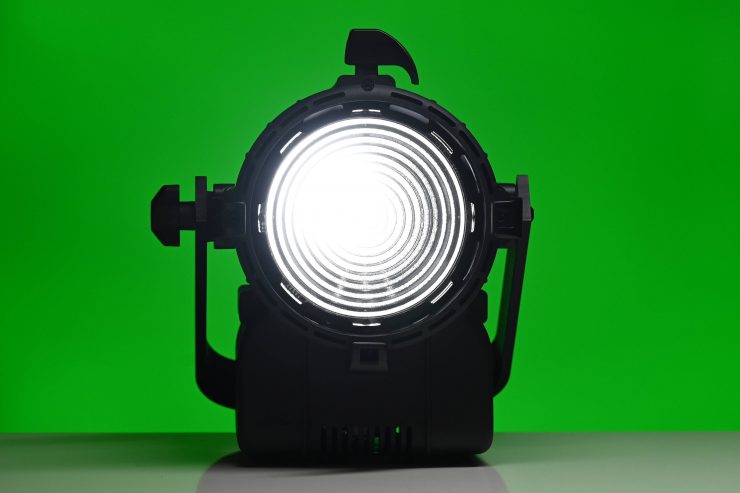
A big factor for a lot of people when buying a light is how much output it can produce. I tested the lights output in both its full flood and spot positions at a variety of Kelvin color temperatures using a Sekonic C-800 at a distance of 1m (3.28ft) in a controlled environment
All measurements were taken from the front of the Fresnel element. All measurements were taken with the Sekonic C-800 at the exact same height and offset to where the middle of the light source was.
What you clearly need to know is that you can’t judge a light, nor should you make an assumption based on one set of tests. You ned to look at all the data and not just cherry-pick something to get a full conclusion.
Below you can see the results:
5600K
5600K Full Spot
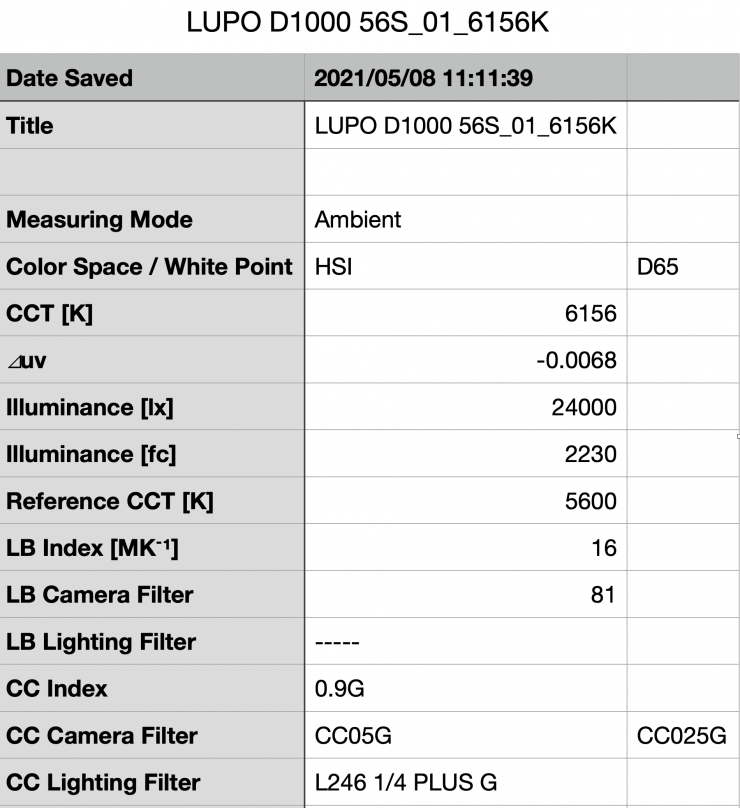
Above you can see the Lupo Dayled 1000 Dual Color Pro when used at 5600K in its full spot position recorded an output of 24000 lx / 2230 (fc). This is a lot of output from a fixture that only draws 110W. This figure was slightly less than the 28000 lx that Lupo claims at the same distance.
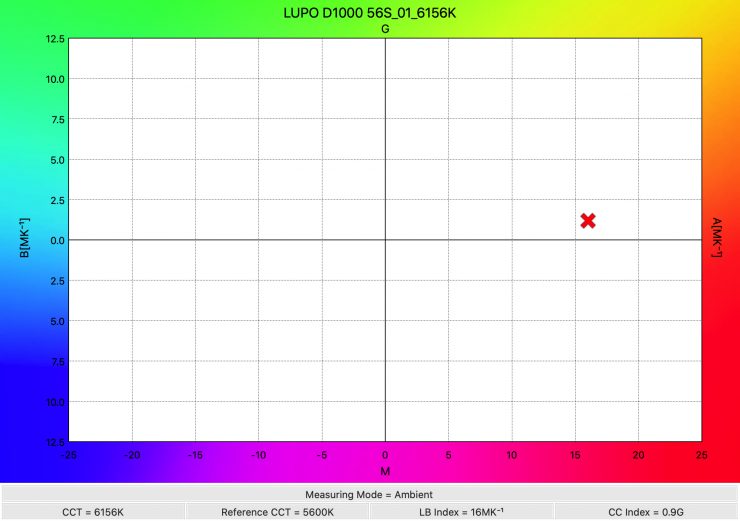
It recorded a Kelvin color temperature of 6156K, which was more than 500K off being a correct daylight source.
5600K Full Flood
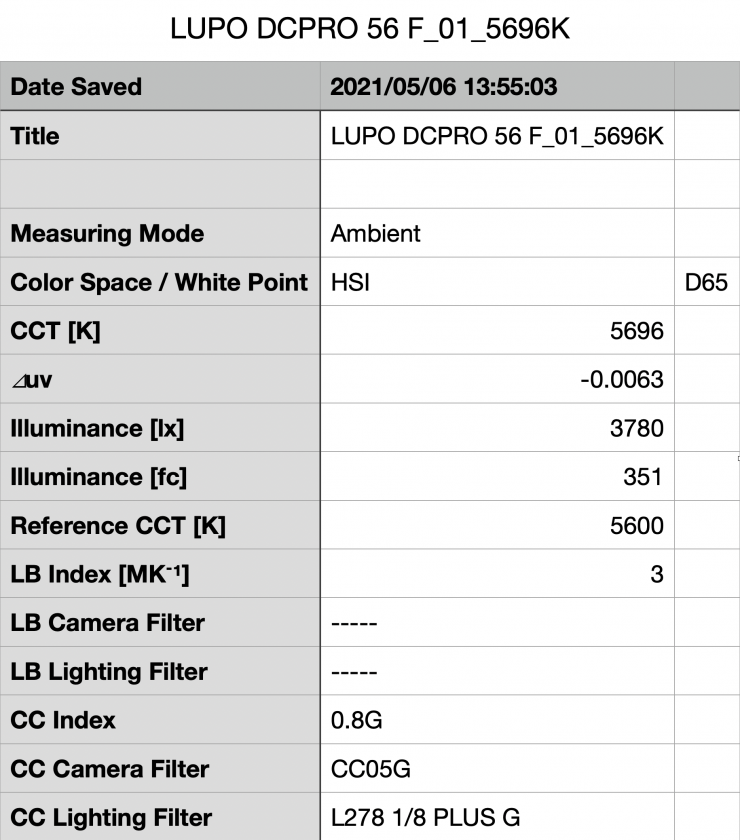
When used in its full flood position at 5600K it recorded an output of 3780 lx (351 fc). That was 84.25% less output compared to when the light is used in its full spot position.
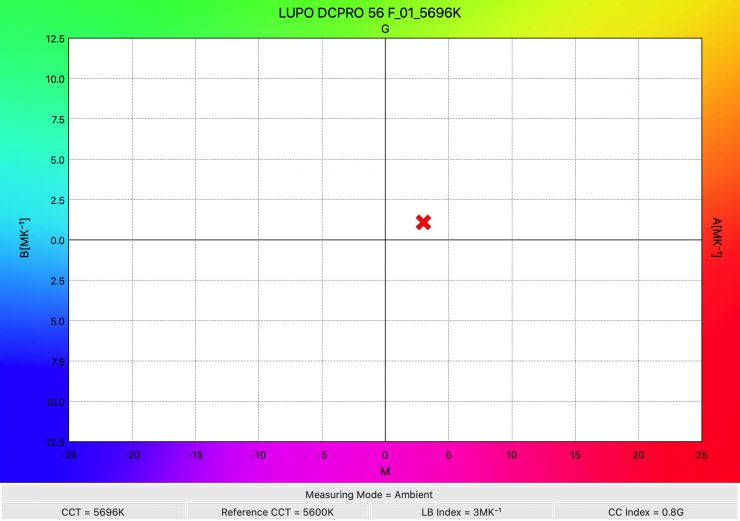
Used in the full flood position it recorded a Kelvin color temperature of 5696K, which was a lot better than when it was used in its full spot position.
3200K
3200K Full Spot
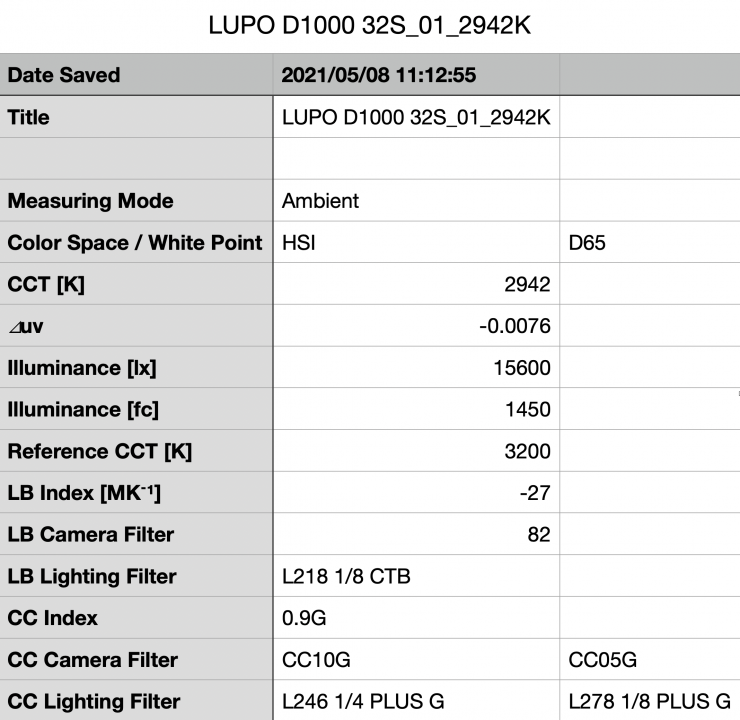
When used in its full spot position at 3200K it had an output of 15600 lx (1450 fc). That was 35% less output compared to when the light is used at 5600K.

It recorded a Kelvin color temperature of 2942K. This result could be better as it is more than 250K off being where it should be.
3200K Full Flood
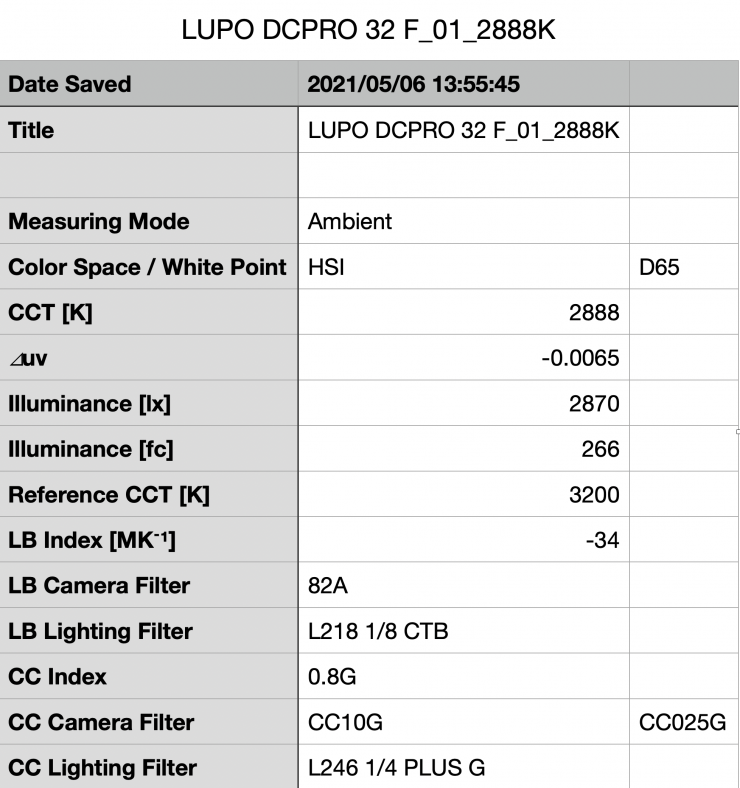
When used at 3200K in its full flood position it had an output of 2870 lx (266 fc).
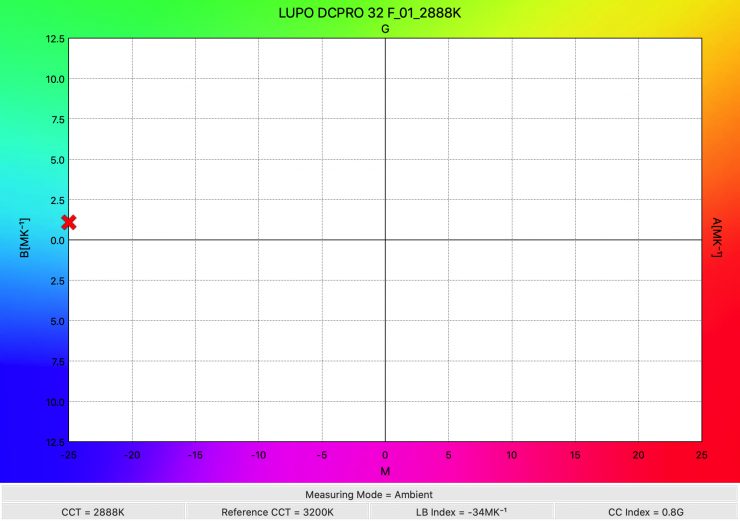
It recorded a Kelvin color temperature of 2888K.
How does it perform at various Kelvin color temperatures?
Summary of results
| OUTPUT | CCT READING | |
| 2800K | 15700 lx | 2814K |
| 3200K | 15600 lx | 2942K |
| 4500K | 19900 lx | 4451K |
| 5600K | 24000 lx | 6156K |
| 6500K | 23200 lx | 7538K |
These results show me that the light’s output varies depending on the Kelvin color temperature being used. The light had the most output when it was used at 5600K. The output varies by 35% from the highest to the lowest figures I recorded.
These results show me that the light drops output when you start moving the Kelvin temperature dial down from 4500K.
The results also show me that the light is not particularly accurate when it comes to Kelvin color temperature reproduction. Only at 2800K and 4500K is it close to producing an accurate reading.
Does the light’s Kelvin color consistency change once it is dimmed down?
With a lot of LED lights, the Kelvin color temperature can change significantly once you start dimming the fixture down. So how does the Dayled 1000 Dual Color PRO fair? Below you can see the performance of the light when used at 5600K.
| CCT | |
| 100% Output | 6156K |
| 75% Output | 6268K |
| 50% Output | 6377K |
| 25% Output | 6360K |
| 10% Output | 6391K |
As you can see the light’s Kelvin color temperature does not alter drastically in any significant way even when the light is dimmed down to 10%. The consistency of the Kelvin color temperature when dimming down the fixture was reasonably good.
How linear is the output?
I wanted to see how linear the light’s output was when used at 5600K. Below you can see the results.
| lx | |
| 100% Output | 24000 lx |
| 75% Output | 16000 lx |
| 50% Output | 10700 lx |
| 25% Output | 3460 lx |
| 10% Output | 695lx |
The results show me that the light’s output is reasonably linear once you start dimming the fixture down. At 50% output, it had 55.4% less output than when it was used at 100% output. At 25% the fixture had 85.5% less output than when it was used at 100%. This shows me that the light’s output is not completely linear, especially once you start dimming the light down below 50%.
You can also choose to set the dimming curves to Linear, Exponential, or Logarithmic if you choose.
How is the fall off?
I took a series of measurements at distances away from the center of the beam when using the fixture at 10° and 60° to see how linear the fall off was and if there were any hotspots.
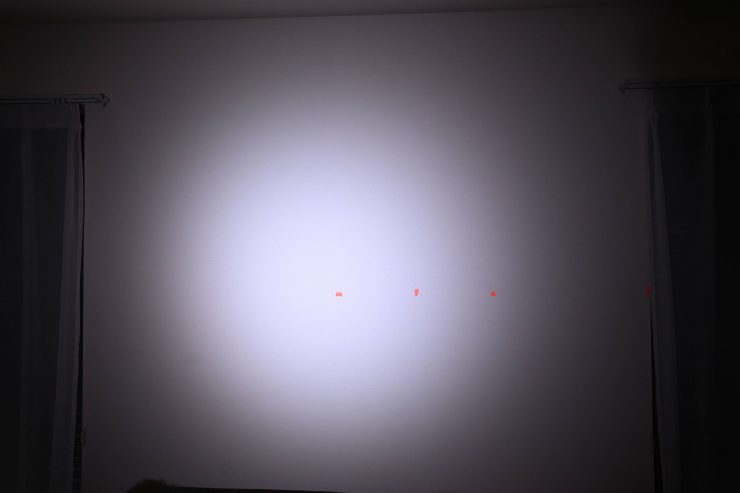

10° at 3m
The Dayled 1000 Dual Coor Pro certainly does have a hot spot in the middle, especially at 10°.
| DISTANCE FROM CENTER | LUX |
| Dead Center | 3530 lx |
| 25cm from center | 2100 lx |
| 50cm from center | 825 lx |
| 1m from center | 150 lx |
Above you can see lux readings taken at the corresponding distances from the center of the beam at a distance of 3m when the light was used at 10°. You can see that the hotspot in the middle is around 40% brighter than if you take a reading 25cm to the left or right.
The intensity of the light then starts to drop away quite dramatically from 25cm to 50cm, to 1m away from the center of the beam. 50cm from the center of the beam the light’s intensity has been reduced by almost 75%.
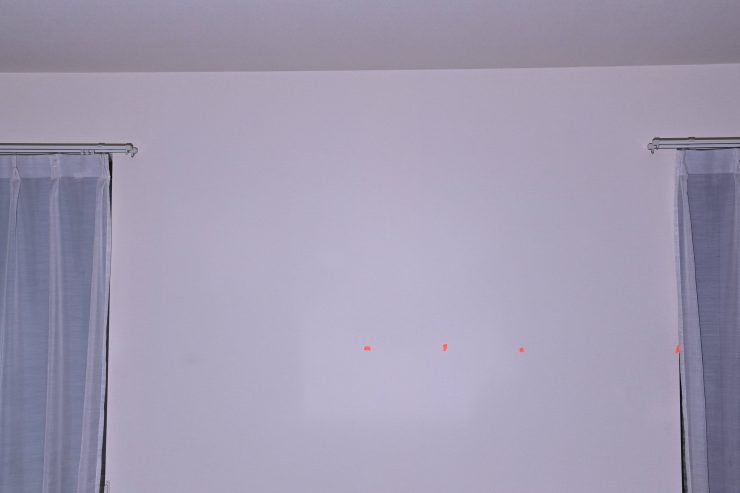
| DISTANCE FROM CENTER | LUX |
| Dead Center | 536 lx |
| 25cm from center | 523 lx |
| 50cm from center | 459 lx |
| 75cm from center | 415 lx |
| 1m from center | 382 lx |
| 2m from center | 250 lx |
Above you can see lux readings taken at the corresponding distances from the center of the beam at a distance of 3m when the light was used at 60°.
At a distance of 3m when used at 60° the Lupo has a fairly even spread of light from the center. Even at 2m from the center of the beam, the light has only reduced by around 53%.
Having the ability to go from 10° to 60° is a nice feature and it makes the Lupo quite versatile.
CC Index & ⊿uv
The CC Index displays the CC correction value and whether any magenta or green need to be added or subtracted. 1 CC corresponds to 035 Kodak CC values or 1/8 Rosco filter values. Any reading less than +1.00 or -1.00 and you’re probably not going to need to make any kind of adjustment. The ⊿uv is the value to show how much this light is away from being an ideal light source (black body radiation = incandescent lamp). As with the CC Index you want this number to theoretically be zero. Kelvin is not a linear value, so we need to convert from Kelvin to MK-1 to compare the values of color temperature. To calculate from Kelvin to Mired is MK-1= 1*1000000/Kelvin. While this may sound confusing, it is the only way of measuring if the Kelvin shift is significant enough to warrant having to use a filter for correction. Below are the results for the light when it was used in its full spot position.
Kelvin Vs MK-1
| Kelvin | Difference in K | MK-1 | Difference in MK-1 | |
| SET VALUE | 2800K | 0 | 357.14 | 0 |
| ACTUAL READING | 2814K | 14 | 355.36 | -1.78 MK-1 |
| SET VALUE | 3200K | 0 | 312.50 | 0 |
| ACTUAL READING | 2942K | 258 | 339.90 | 27.40 MK-1 |
| SET VALUE | 4500K | 0 | 222.22 | 0 |
| ACTUAL READING | 4451K | 49 | 224.66 | 2.44 MK-1 |
| SET VALUE | 5600K | 0 | 178.57 | 0 |
| ACTUAL READING | 6156K | 556 | 162.44 | -16.13 MK-1 |
| SET VALUE | 6500K | 0 | 153.84 | 0 |
| ACTUAL READING | 7538K | 1038 | 132.66 | -21.18 MK-1 |
These figures might look confusing, but what it tells me is that the light is very accurate at 2800K and 4500K,. At 3200K, 5600K and 6500K the Kelvin color accuracy is way off. Any MK-1 score that is under -9/9 means you wouldn’t have to use any color correction gels. Again, we don’t want to judge a light based on one set of scores.
CC INDEX & ⊿uv
| CC INDEX | ⊿uv | |
| 2800K | 0.7G | -0.0060 |
| 3200K | 0.9G | -0.0076 |
| 4500K | 1.1G | -0.0116 |
| 5600K | 0.9G | -0.0068 |
| 6500K | 0.9G | -0.0040 |
These results show me that the light skews towards green, but as we will find out later on in the review this isn’t actually anything to be concerned about.
Color Rendering
5600K Full Spot
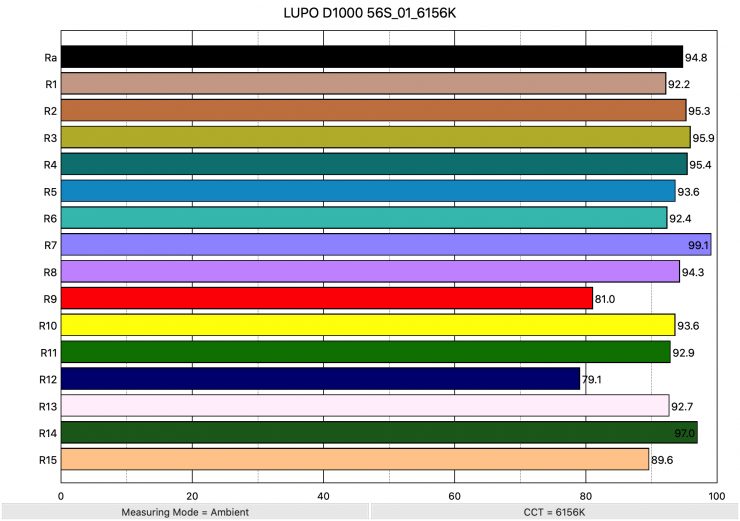
So now that we have seen how much output the Dayled 1000 Dual Color Pro produces, how does it perform when it comes to replicating accurate colors? Above you can see that the light recorded an average CRI (R1-R8) of 94.8 and an extended CRI (R1-R15) of 92.27. For replicating accurate skin tones it recorded 81.0 R9 (red), 92.7 for R13 (closest to caucasian skin tones), and 92.7 for R15 (closest to Asian skin tones). These are reasonably good results.
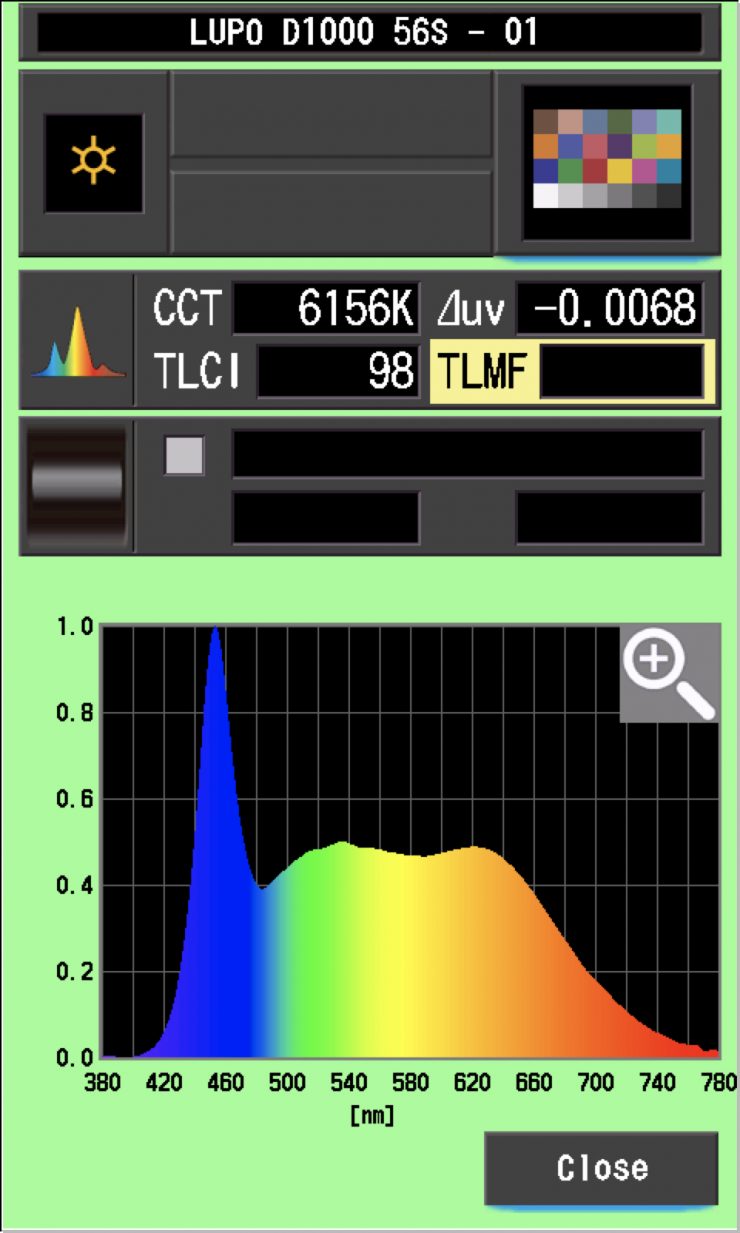
The light when used at 5600K recorded a TLCI score of 98.
3200K Full Spot
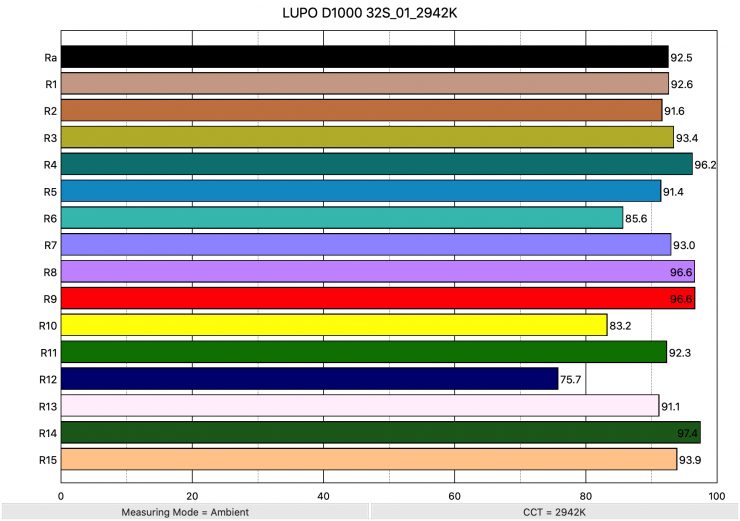
Above you can see that when the light was set at 3200K it recorded an average CRI (R1-R8) of 92.5 and an extended CRI (R1-R15) of 91.37. For replicating accurate skin tones it recorded 96.6 R9 (red), 91.1 for R13 (closest to caucasian skin tones), and 93.9 for R15 (closest to Asian skin tones). Again, these are reasonably good results, but not outstanding.
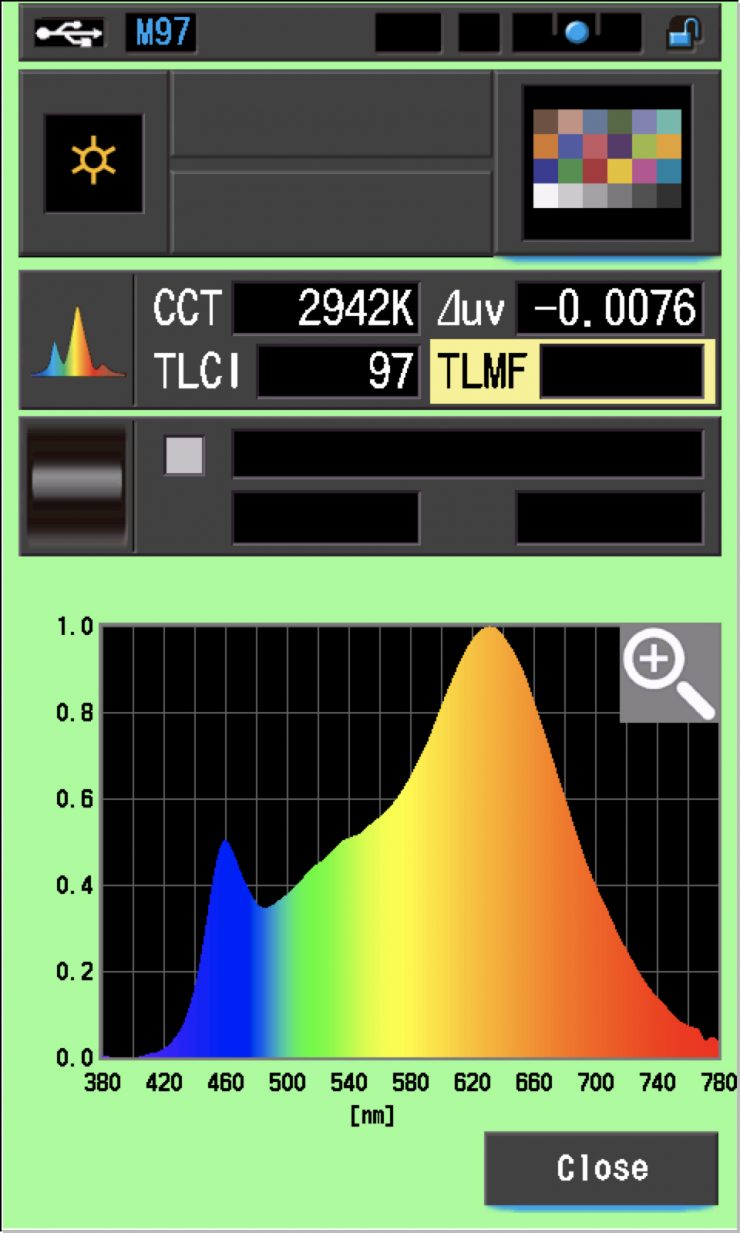
The light when used at 3200K recorded a TLCI score of 97.
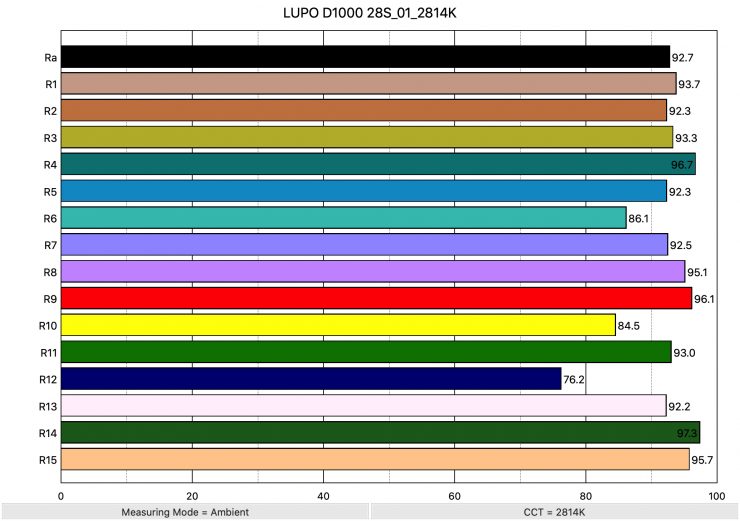
Above you can see the color rendering scores when the light was used at 2800K, 4500K, and 6500K.
TM-30
TM-30 is a relatively new color rendering standard that was developed to deal with the limitations of CRI. TM-30 looks at 99 individual colors. These 99 colors are categorized into seven groups: nature, skin color, textiles, paints, plastics, printed material, and color systems.
TM-30 scores go from 0 – 100. The higher the score, the more accurate a light is at producing colors. Any TM-30 Rf score in the ’90s is considered to be good. What is interesting and something that you need to be very aware of is that two separate light sources with the exact same CRI scores can render colors very differently. A light with a high CRI rating could have a low TM-30 score. Conversely, a light with a good TM-30 score could have a bad CRI score.
Now, there are two measurements associated with TM-30, Rf and Rg.
- Rf (Color Fidelity)
- Rg (Color Gamut)
With Rf value, ideally, you want a score in the 90’s.
With Rg value, a score below 100 indicates that the light source renders colors with less saturation than the reference source. So ideally you want this score to be above 100.
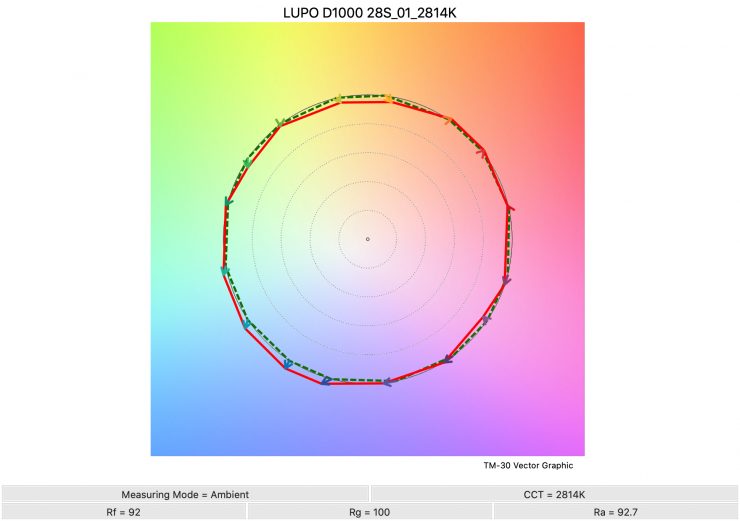
Above you can see the scores for the Dayled 1000 Dual Color Pro at various Kelvin color temperatures. Below I have listed the figures as well.
| Rf | Rg | |
| 2800K | 92 | 100 |
| 3200K | 93 | 101 |
| 4500K | 93 | 103 |
| 5600K | 92 | 103 |
| 6500K | 91 | 100 |
The TM-30 scores are all good and it shows me that the light is pretty consistent at replicating accurate colors.
SSI
SSI (Spectral Similarity Index) was developed by the Sci-Tech Council of the Academy. SSI gives me the ability to set any light as a standard, or use predefined standards (such as CIE D55), and then give other lights an SSI score based upon how well they will match standards such as CIE D55 measure spectral response and compare it directly against an ideal light source.
SSI is a much better way to judge an LED light than CRI or TLCI.
SSI is useful to see how well different lights will play together. As the Sekonic C-800 Spectromaster can measure SSI, I decided to test out the Dayled 1000 Dual Color Pro to see how it performed.
5600K Full Spot
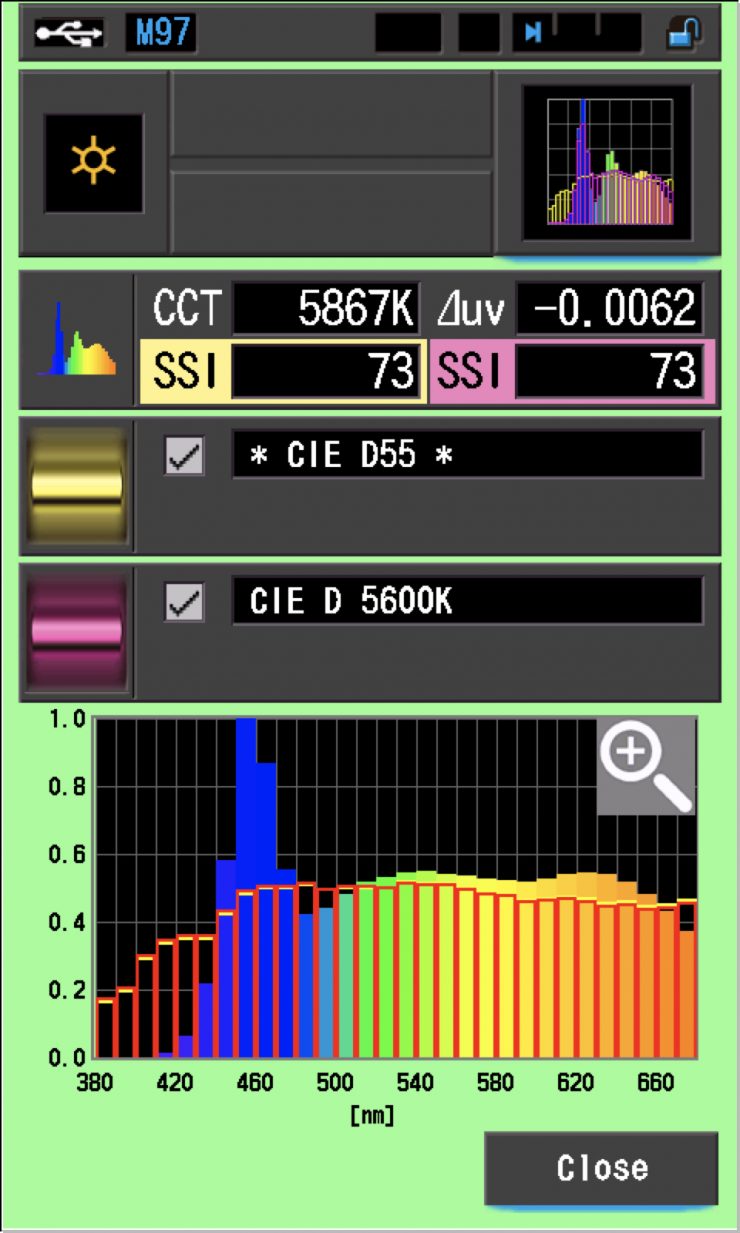
The scores show that the light does a reasonably good job of accurately replicating a CIE D55 source. A score in the low to mid-70s is very typical for a 5600K LED light.
The main reason we want to record SSI scores is so we can see how well they match with other lights. I was curious to see how well the Dayled 1000 Dual Color Pro matched the Litepanels Gemini 1×1 HARD and an ARRI Orbiter. Below you can see the results.
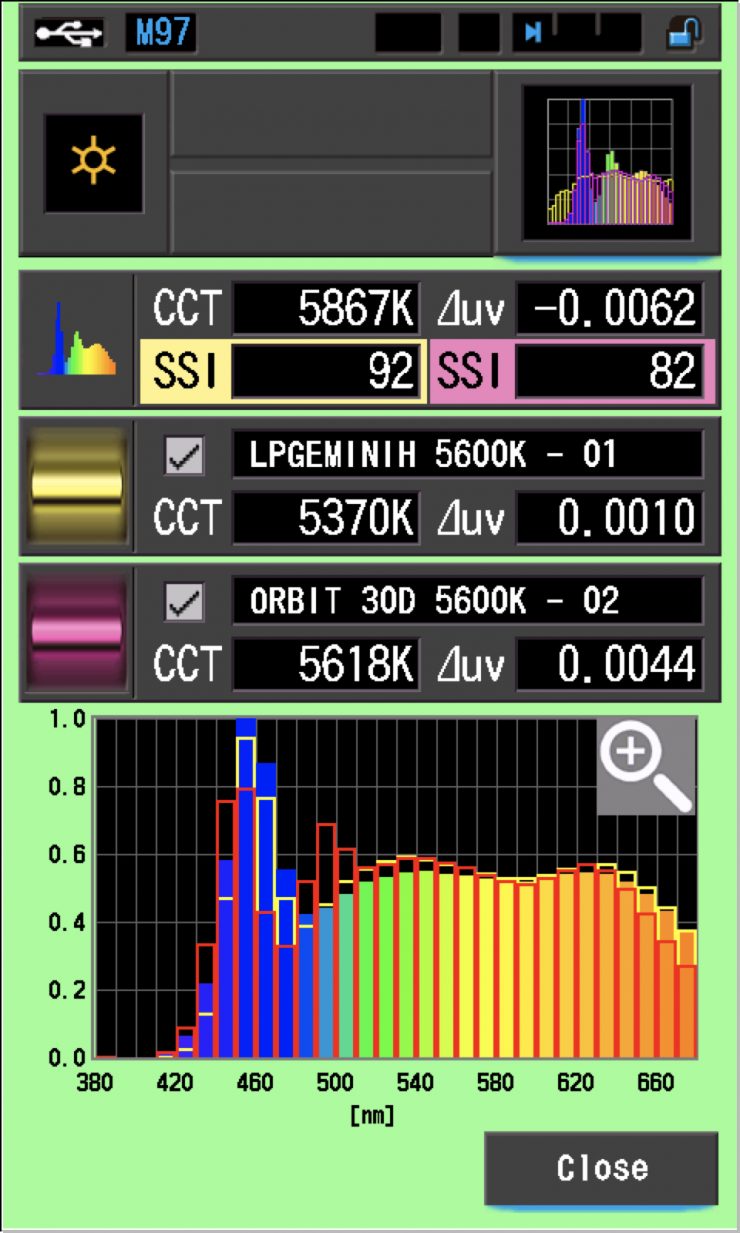
As you can see that the Lupo and the other two lights are not a perfect match. However, a score in the high 80’s or low 90’s isn’t that bad and with a bit of tweaking, you could probably get the Litepanels Gemini 1×1 HARD to match reasonably well. It wouldn’t match that well when used with an ARRI Orbiter.
3200K Full Spot
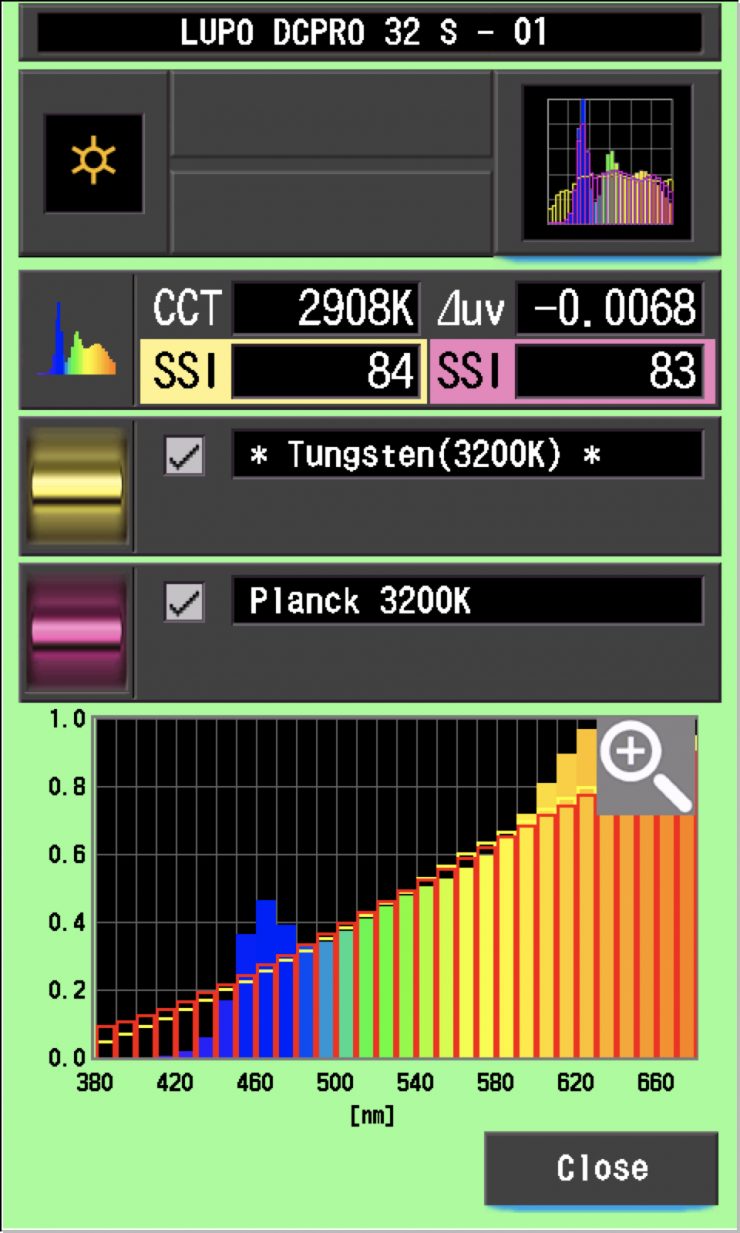
In the above graph, the red bars indicate a perfect Planck 3200K source. The gold bars indicate a perfect 3200K Tungsten source. This lets us compare how close to a perfect 3200K lighting source the Lupo Dayled 1000 Dual Color Pro is. Any SSI score in the ’80s is very good for a 3200K LED light. As you can see, LED lights have a hard time replicating colors below about 450nm.
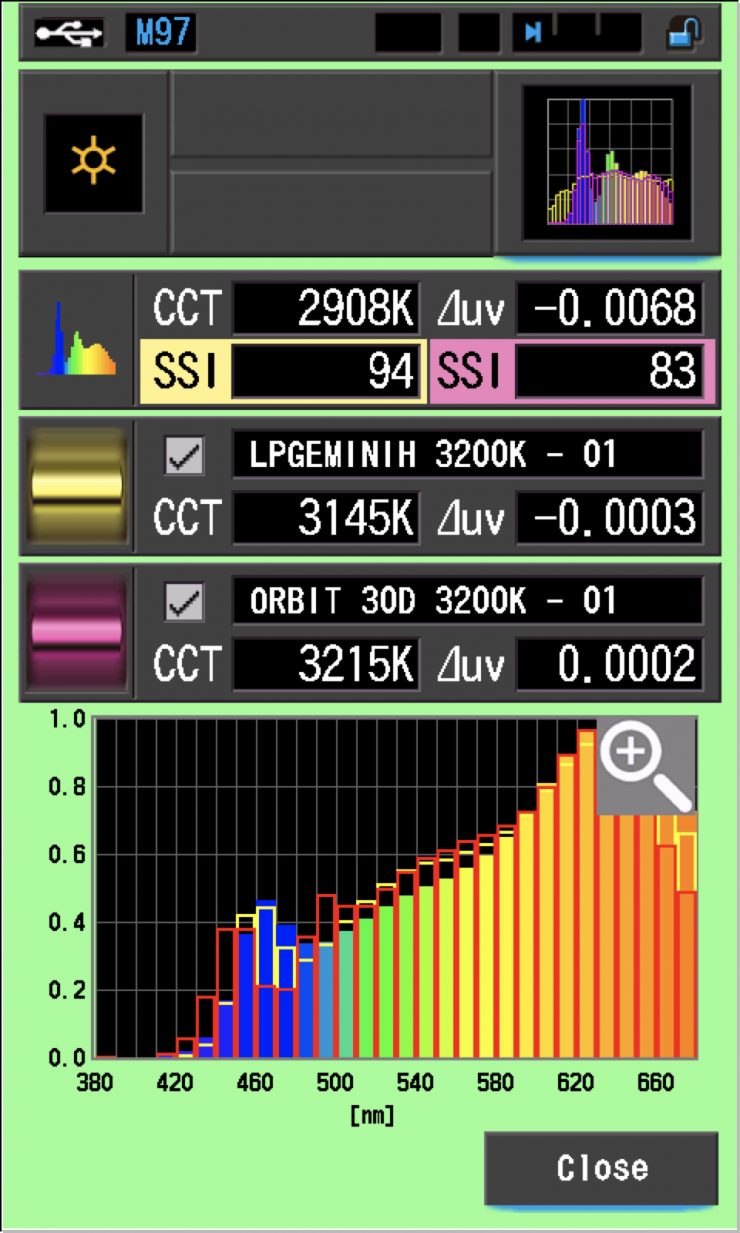
Again, let’s compare the Lupo against the Litepanels and ARRI as we did at 5600K. Above you can see that the match is slightly better at 3200K than it was at 5600K.
Being able to measure SSI in advance and compare different lights you may be using together is a great way of finding out what lights will work together and what adjustments need to be made.
Spectral Distribution
5600K
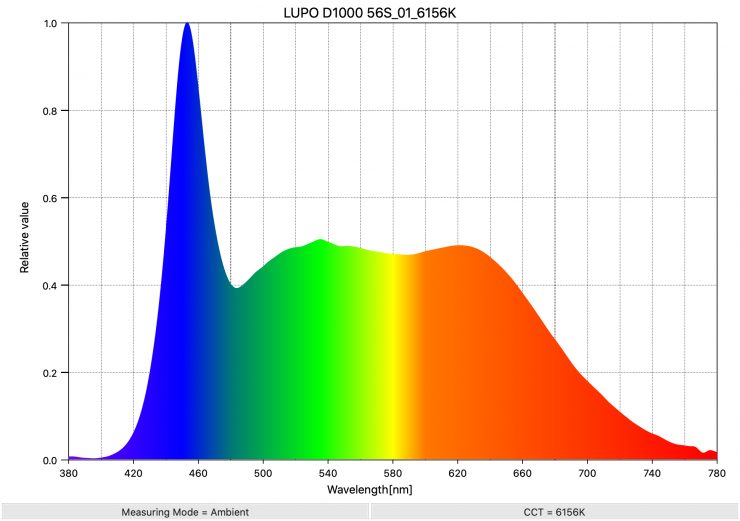
Above you can see the spectral distribution of the Lupo when used at 5600K. The spectral distribution is not overly full, but then again this is not an RGBWW fixture. The nice aspect of the spectral response is there aren’t any spikes where there shouldn’t be.
3200K
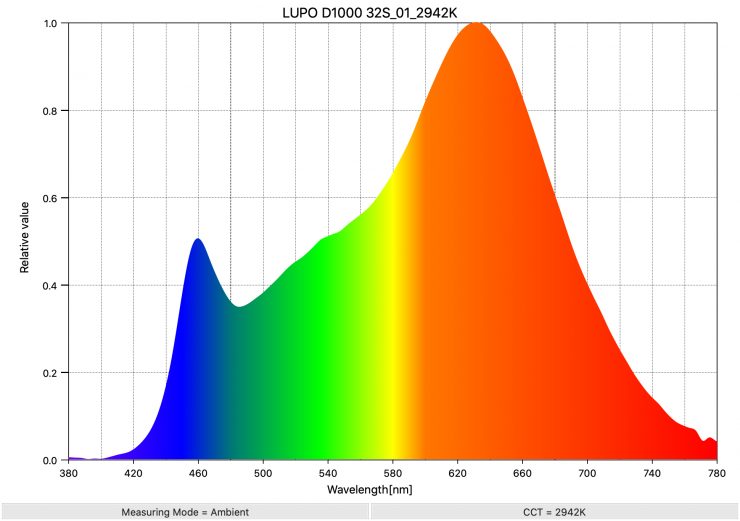
Above you can see the spectral distribution of the Lupo when used at 3200K. The spectral distribution is nice and linear, and again, just like at 5600K, there aren’t any spikes where there shouldn’t be.
Real-World Usability
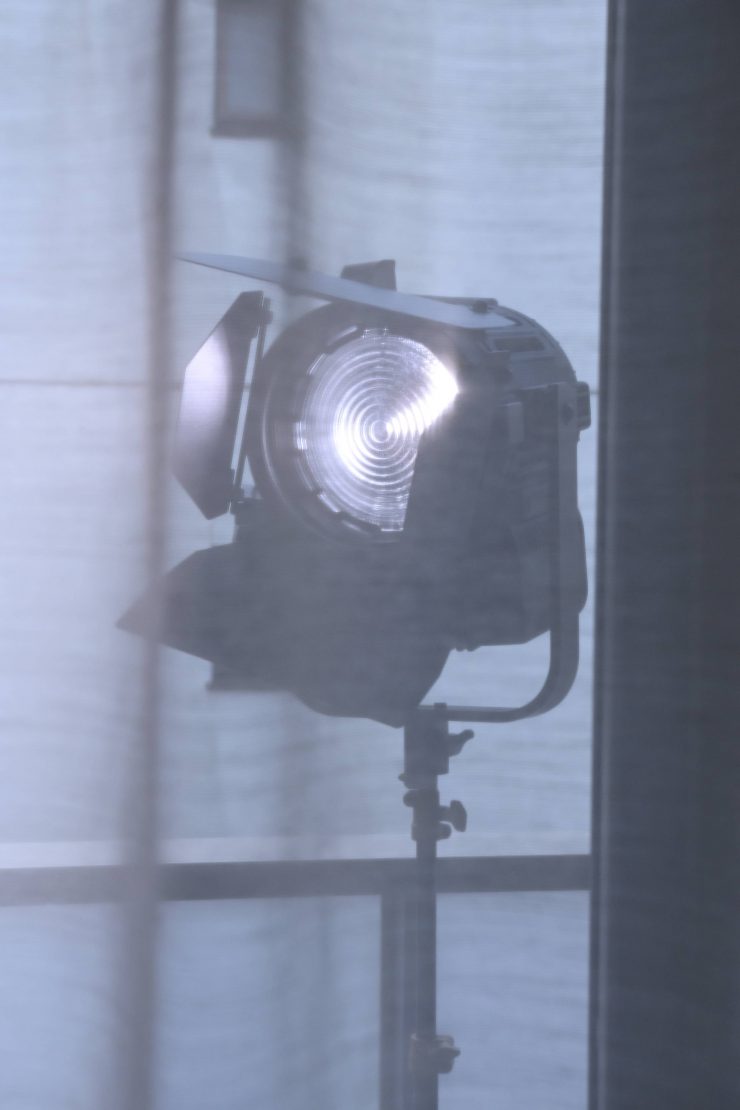
The Lupo isn’t going to be a replacement for a bigger, larger, high output HMI or LED fresnel. Its primary function is to create a decent amount of output, in a compact-sized fixture that can be powered remotely in the field.
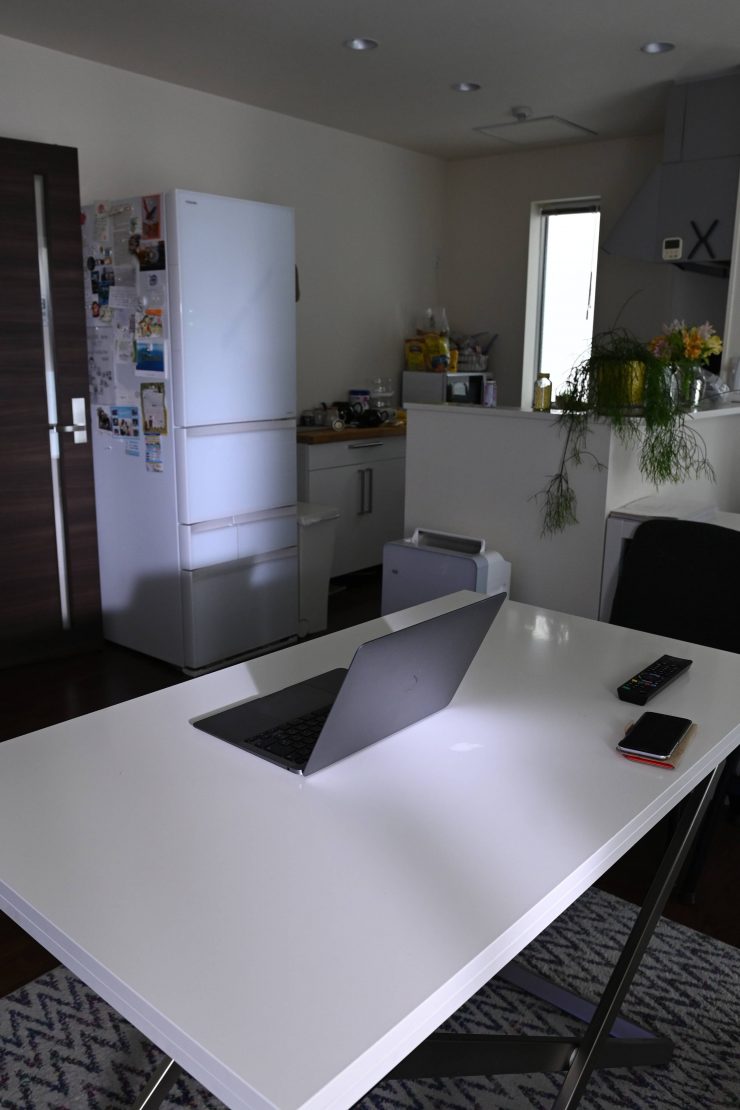

Full Spot 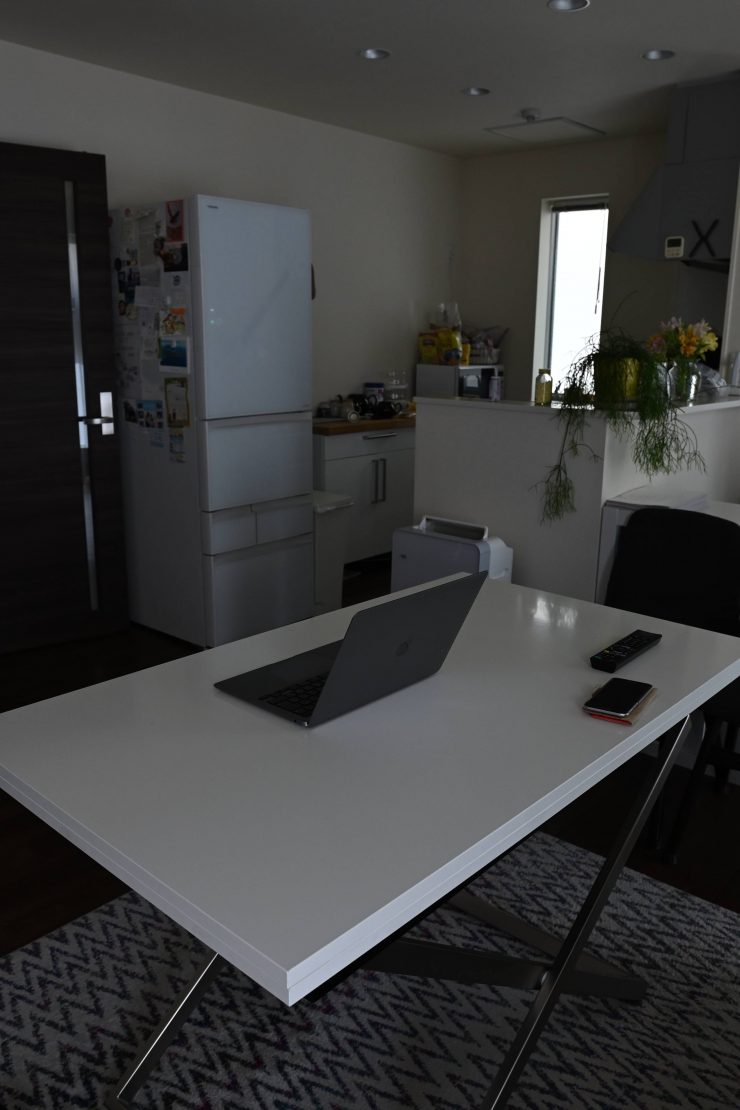
Light off
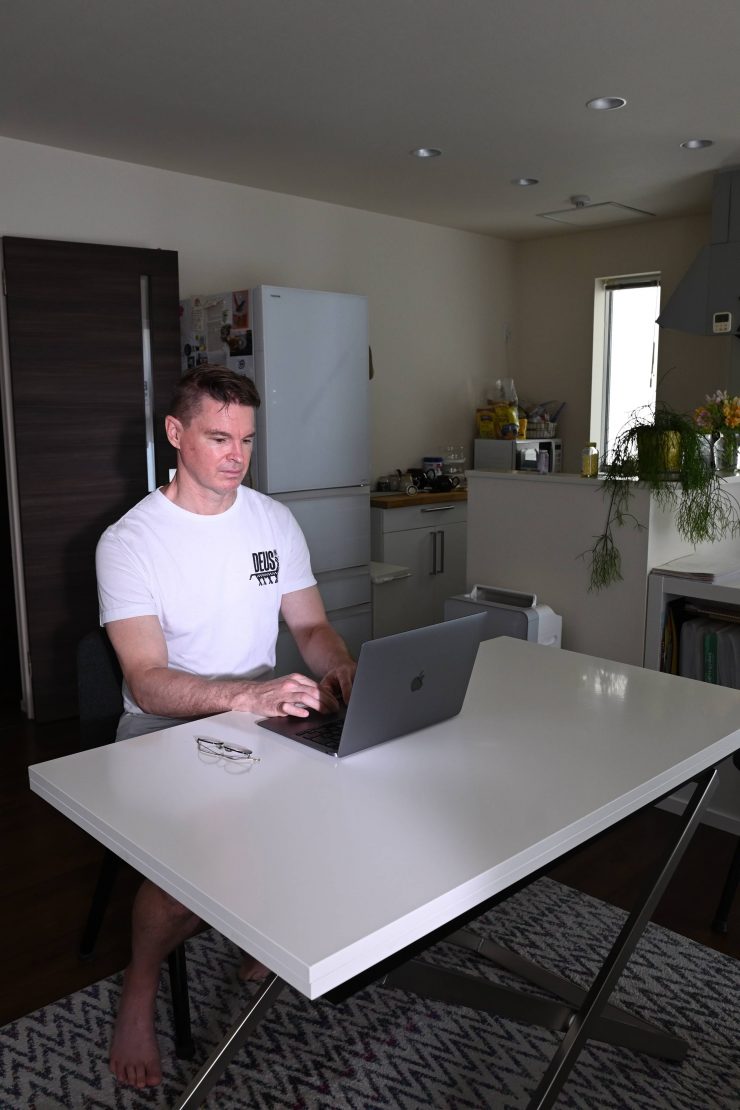

Full Spot 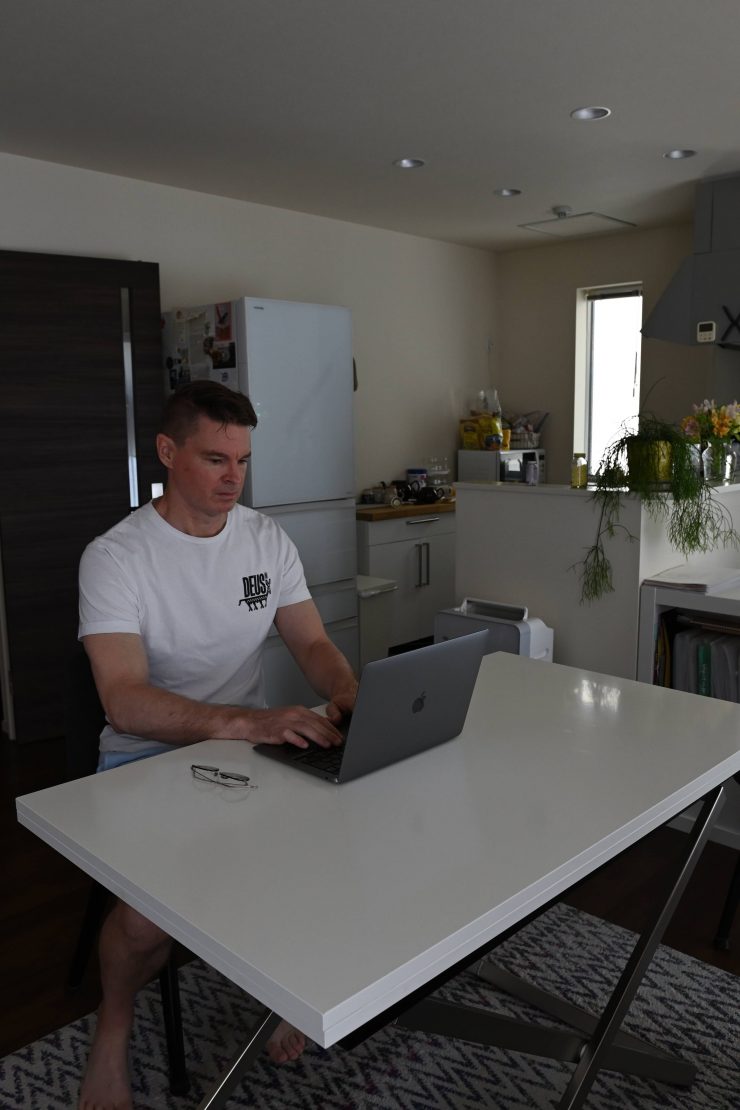
Light off
Above you can see some quick examples of punching the light through a window and light curtain from outside to replicate sunlight coming in. I have taken pictures with the light on and with it off at the exact same camera settings.
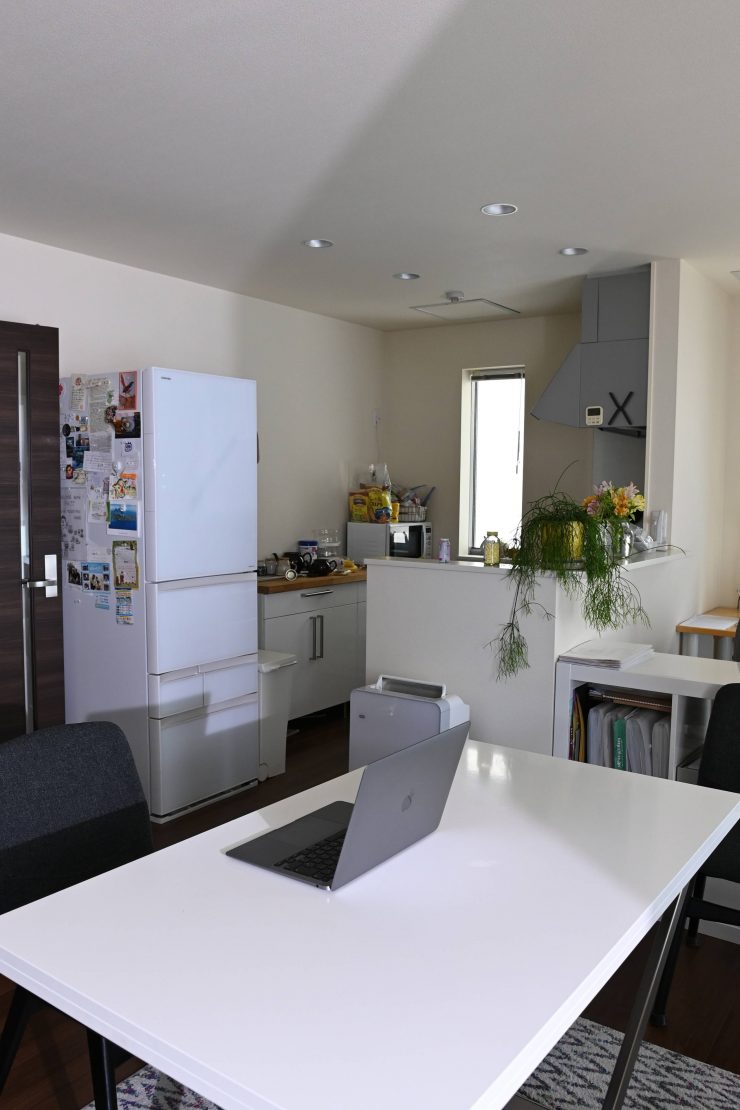

Full Flood 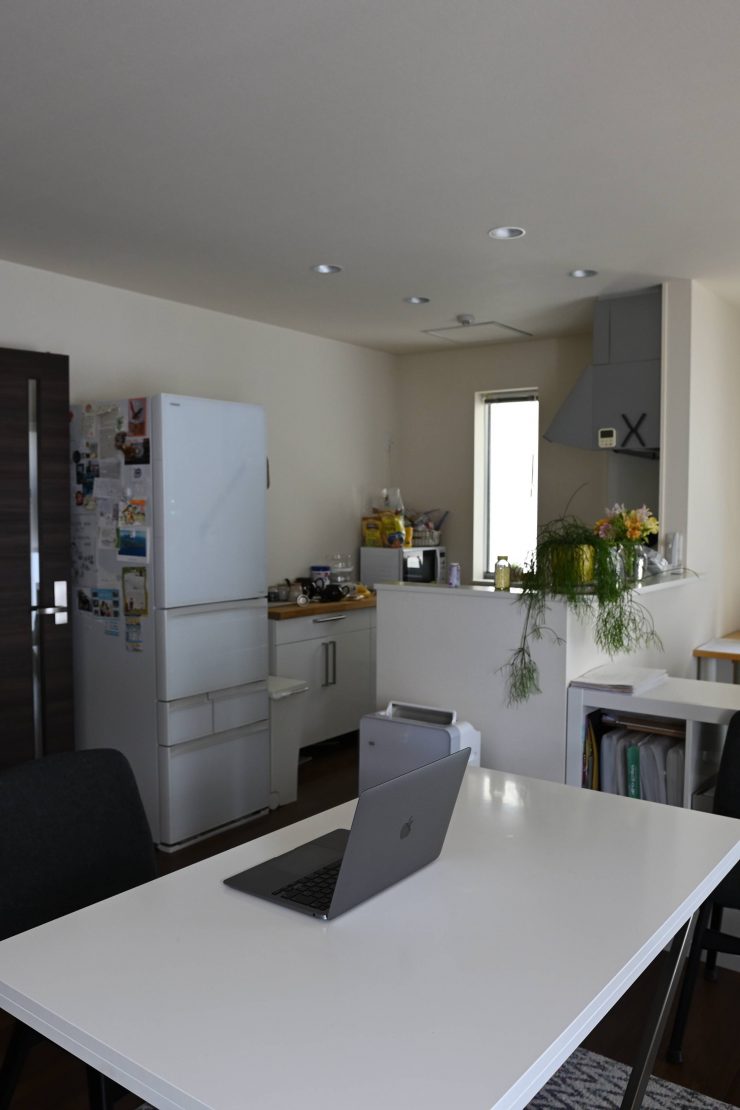
Light off
Above you can see what the light looks like being punched through a light curtain from outside in its full flood position.
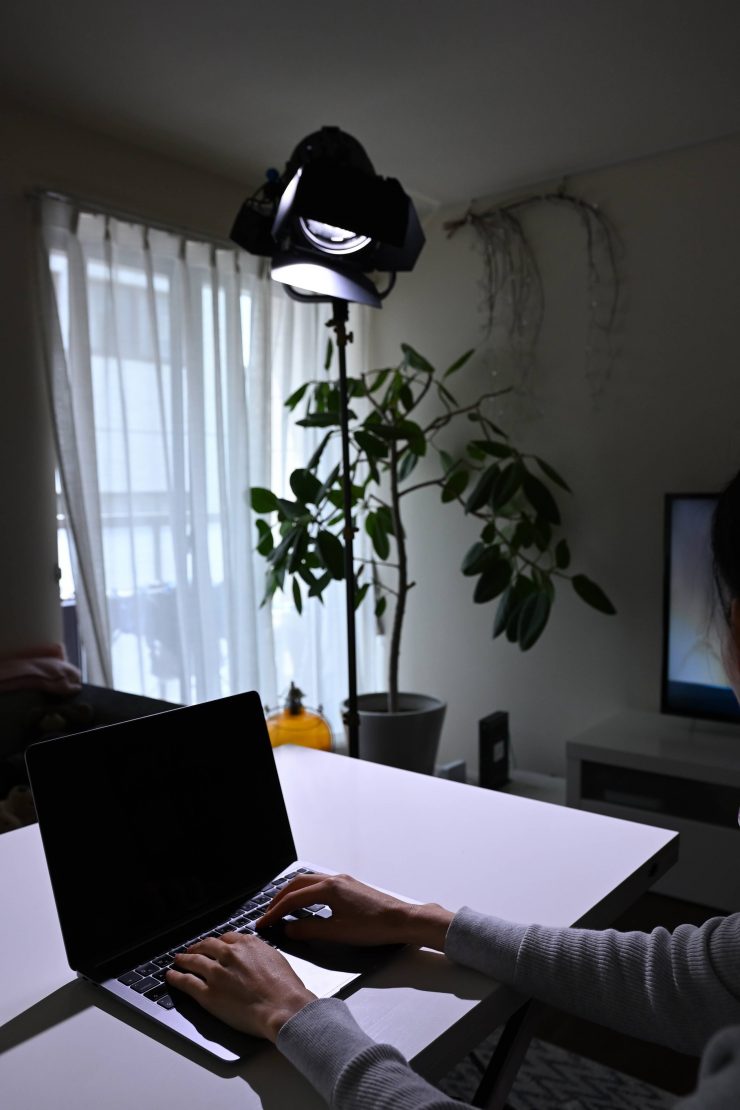
Above you can see a couple of quick shots with the light being bounced directly into a table.
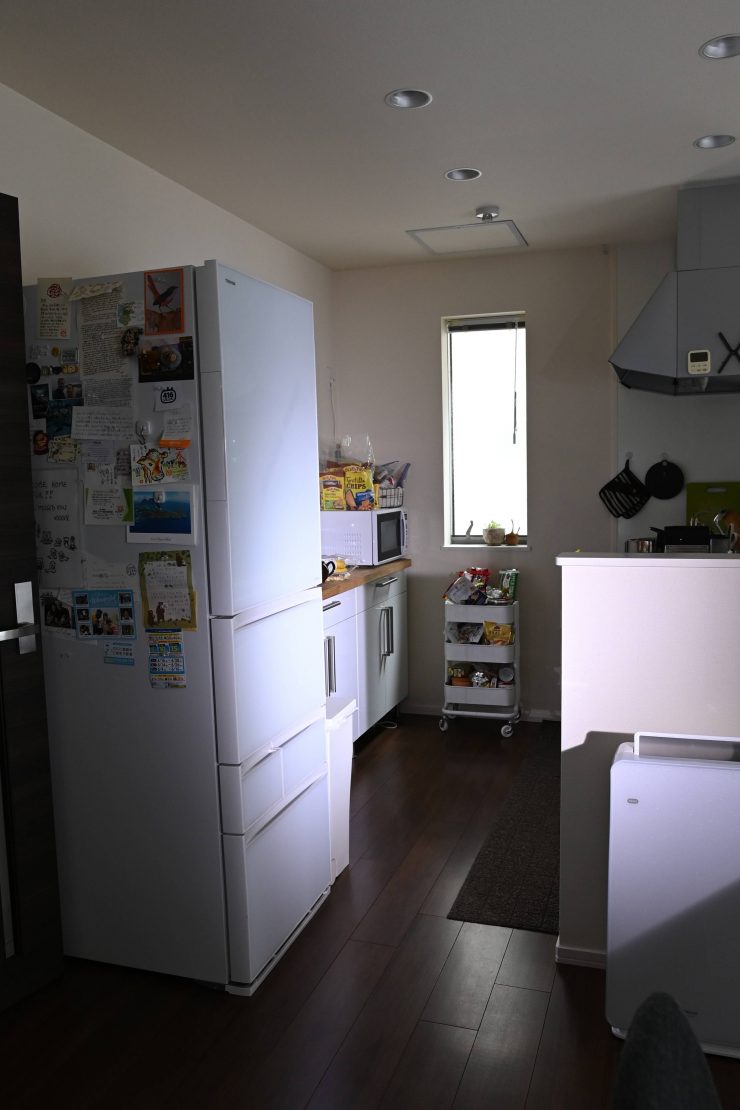

Light on 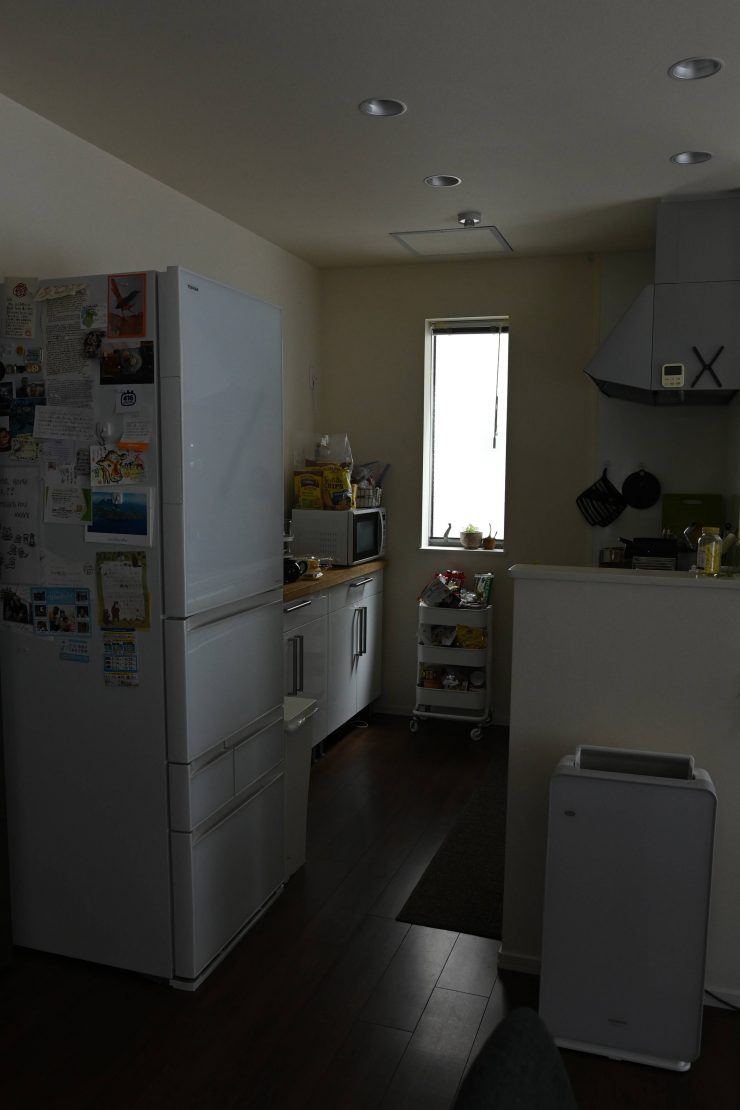
Light off
Price
The Lupo Dayled 1000 Dual Color Pro retails for $1599.00 USD. It should be available and shipping soon.
The Dayled 2000 Dual Color Pro version retails for $1899 USD.
Competition
Below you can see some of the other competing lights.
| WEIGHT | POWER DRAW | PRICE | |
| Dracast Fresnel Studio LED1000 Bi-Color LED Light | 7.7 kg / 17 lb | 100W | $799 USD |
| CAME-TV Boltzen F-100S Fanless 100W Focusable Fresnel Bi-Color LED Light | Not Listed | 100W | $506 USD |
| Lumos Hawk 100MK Bi-Color 2800-6500K LED Fresnel | 4.5 kg / 9.92 lb | 100W | $1,978 USD |
| Ledgo Bi-Color LED Fresnel Studio Light with DMX | 5.2 kg / 11.46 lb | 120W | $1,125 USD |
| Intellytech Light Cannon X-100 Fresnel with V-Mount Battery Plate | 2.27 kg / 5 lb + Power Supply 1.36 kg / 3 lb / | 100W | $629 USD |
Conclusion
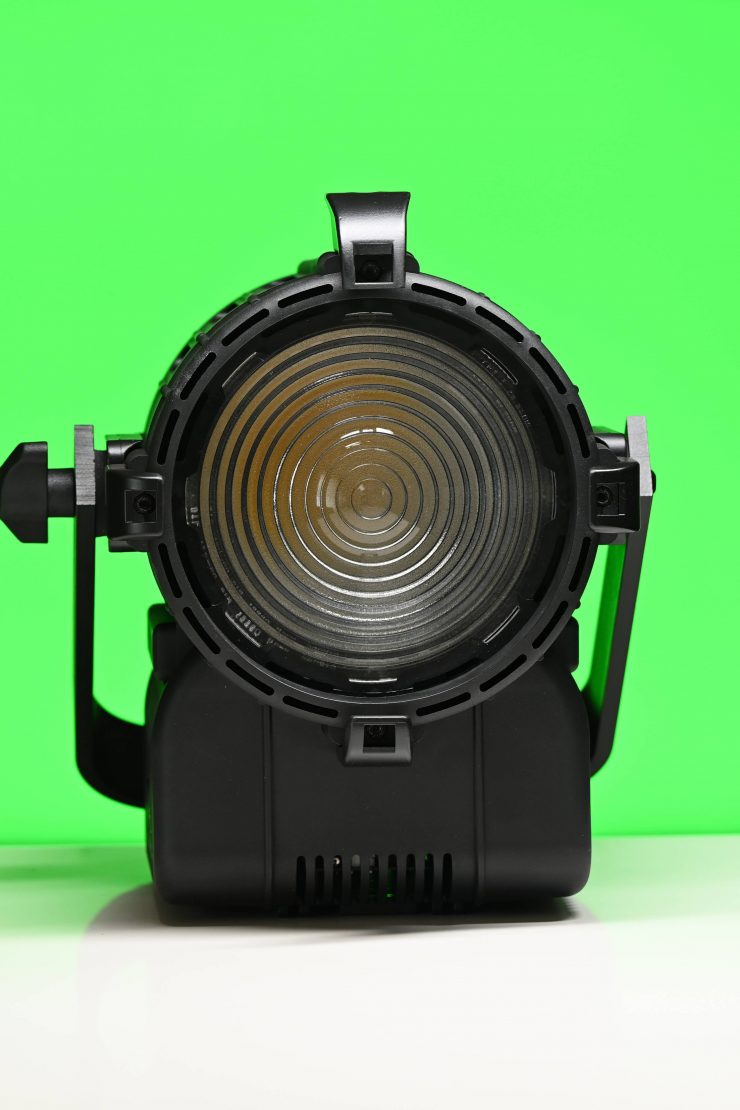
The Lupo Dayled 1000 Dual Color Pro is a well-built, solid offering from the Italian lighting company. It relatively compact and lightweight for a fresnel fixture and it has the added benefit of being able to be powered off a single flight safe battery.
The light offers a lot of output considering its power draw and it has decent color accuracy once you factor in all of the data from my testing.
If you are a solo operator or traveling a lot, the Lupo makes a lot of sense if you need to take a Fresnel fixture that can be remotely powered in the field.
The original Lupo Dayled 1000 Dual Color was a popular fixture, especially in broadcast circles for a reason, and the new Pro version builds on the original without straying too far off the path.
Like what we do and want to support Newsshooter? Consider becoming a Patreon supporter and help us to continue being the best source of news and reviews for professional tools for the independent filmmaker.

